The Seven Wonders of Portugal are a small collection of Portugal’s most important historical sites. These range from ancient castles to historic monasteries to colorful palaces. Some you may have heard of, such as Pena Palace and Belém Tower, but others may seem more obscure. They are all worth a visit on a trip through Portugal.
In this guide, we uncover the Seven Wonders of Portugal, plus practical information to help you plan your visit.
What are the Seven Wonders of Portugal?
The Seven Wonders of Portugal are seven cultural wonders in the country of Portugal. A list of 793 national monuments were candidates and this was narrowed down several times. In 2006, the 21 finalists were released to the public for a 6 month election process. The results were announced in 2007 and here is the list of the Seven Wonders of Portugal:
- Castle of Óbidos
- Pena Palace
- Jerónimos Monastery
- Belém Tower
- Castle of Guimarães
- Batalha Monastery
- Alcobaça Monastery
Most of these can be visited while in Lisbon (Pena Palace, Batalha Monastery, Alcobaça Monastery, and the Castle of Óbidos make great day trips from Lisbon) and Belém Tower and Jerónimos Monastery are two of the top things to see in Lisbon.
To visit the Castle of Guimarães, you will have to journey to northern Portugal. This makes a wonderful day trip from Porto and the town of Guimarães is well worth a few hours of your time.
How to Use This Map: Click the icons on the map to get more information about each point of interest. To take this map with you, click the star next to the title of the map which adds it to your Google account. Next, within your Google Maps app, select ‘Saved’ and then select ‘Maps’. This map title will now appear in your list.
Seven Wonders of Portugal
Castle of Óbidos
The Castle of Óbidos is one of the best-preserved castles in Portugal.
It dates back to Roman times, was later fortified under Arab rule, and then taken over during Christian rule in 1148. It was severely damaged in the 1755 earthquake and renovated the 20th century.
It is located in the town of Óbidos, a small, walled, medieval town. It is a joy to explore, with colorful cobblestoned streets, castle walls to walk, and a nice collection of boutique shops and restaurants.
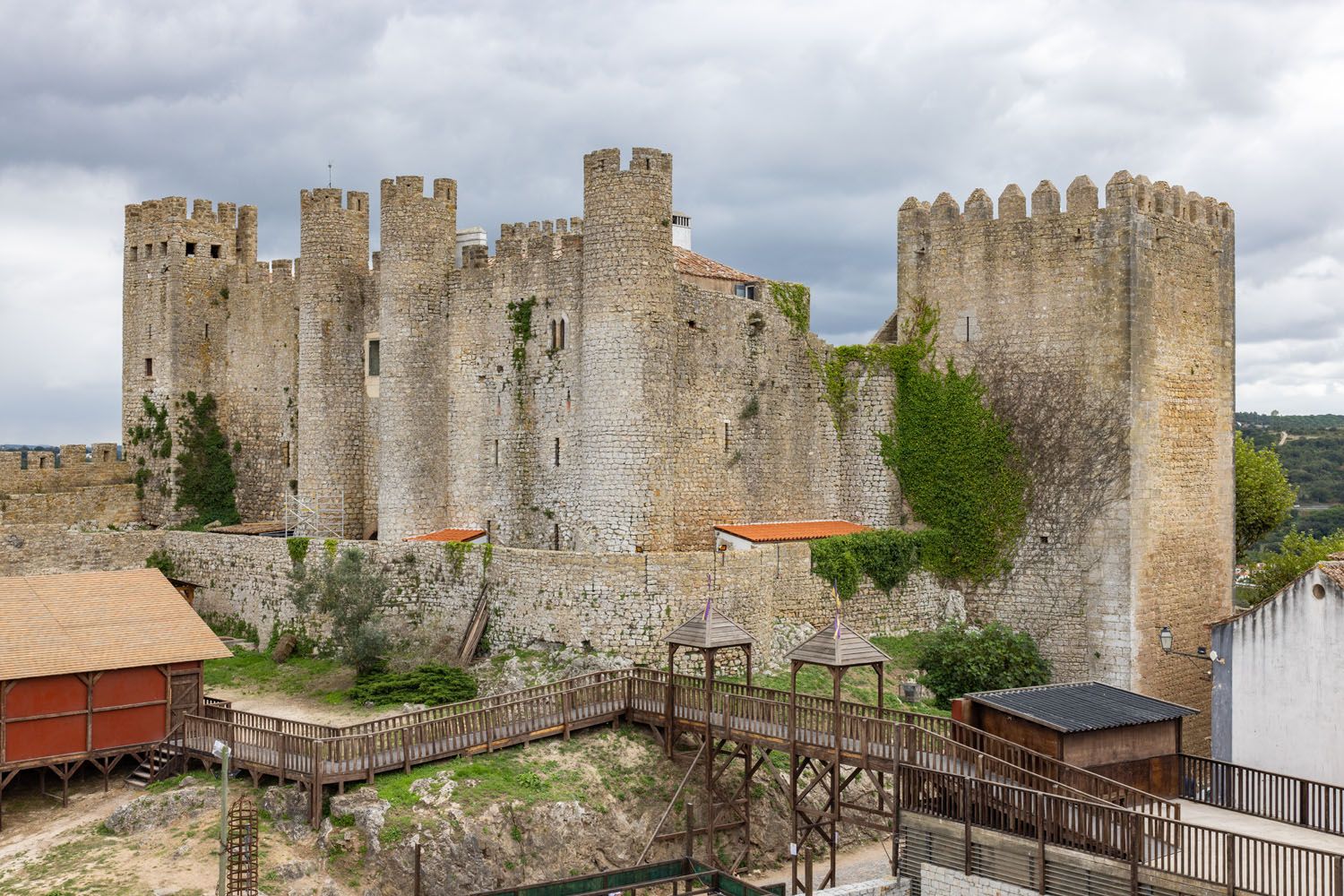
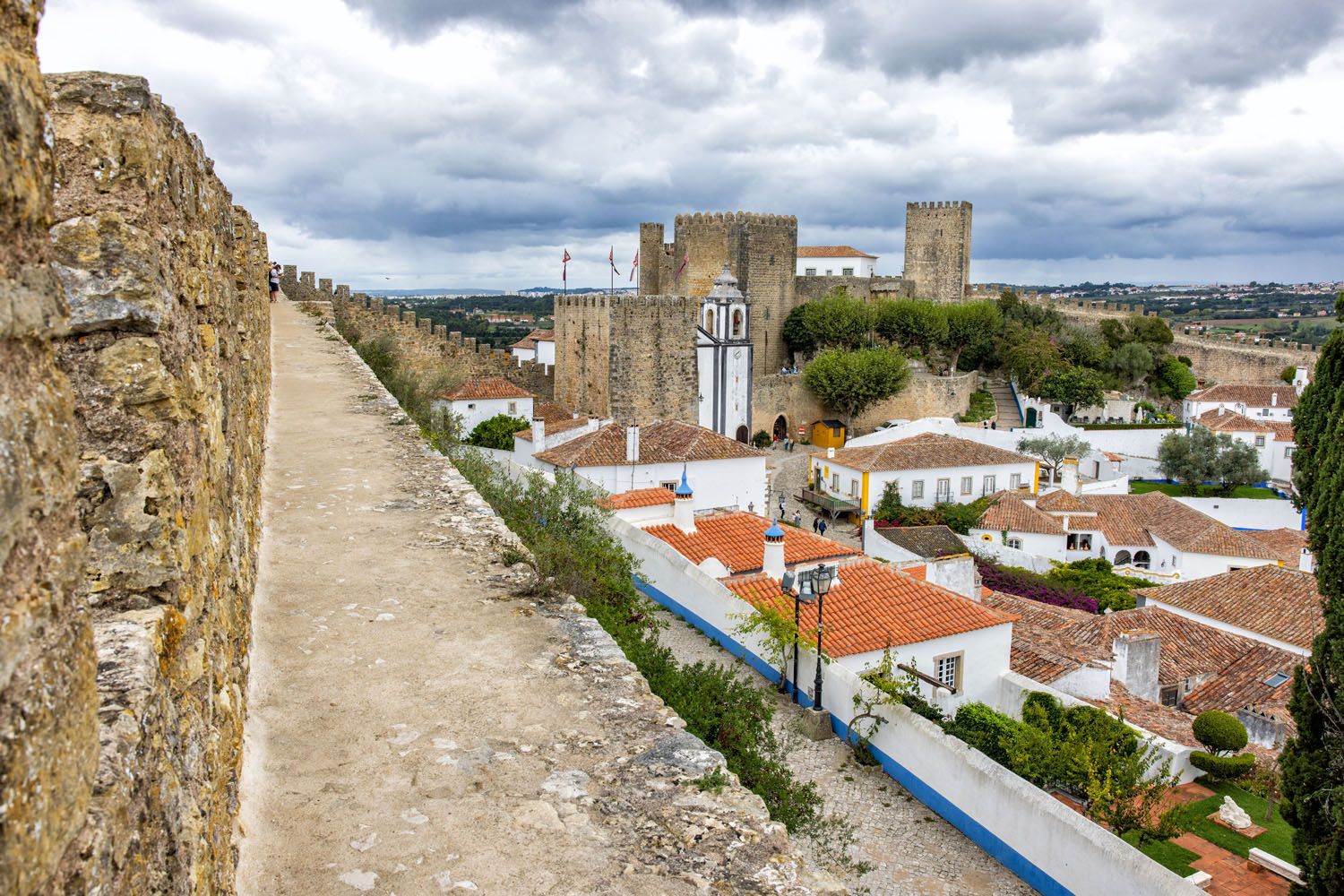
The view of Óbidos and the castle from the castle walls
How to Visit the Castle of Óbidos
The Castle of Óbidos is now a 4-star hotel and restaurant (Pousada Castelo de Óbidos). As a visitor, you can enter the castle and see its courtyard, but the remainder of the castle is off limits, unless you are a guest of the hotel or dining in the restaurant. It’s worth climbing the stairs in front of the castle, because from its terrace you get a nice view of Óbidos.
Learn more about how to visit the town and Castle of Óbidos in our article Best Things to Do in Óbidos ↓
15 Wonderful Things to Do in Óbidos, Portugal
Best things to do in Óbidos, plus where to eat and where to stay.Pena Palace
Pena Palace is one of Portugal’s most recognizable landmarks. It is the #1 attraction in Sintra.
This UNESCO World Heritage Site is famous for its mountain top setting, its whimsical blend of architectural styles, and its vibrant colors.
A chapel and monastery stood on this site until the Great Lisbon Earthquake of 1755 leveled the buildings. King Ferdinand II purchased the land in 1838 and turned the remains of the monastery into a palace. This palace brings together Gothic, Islamic, and Renaissance styles into a vibrantly colorful, eclectic palace that is a delight to explore and photograph.
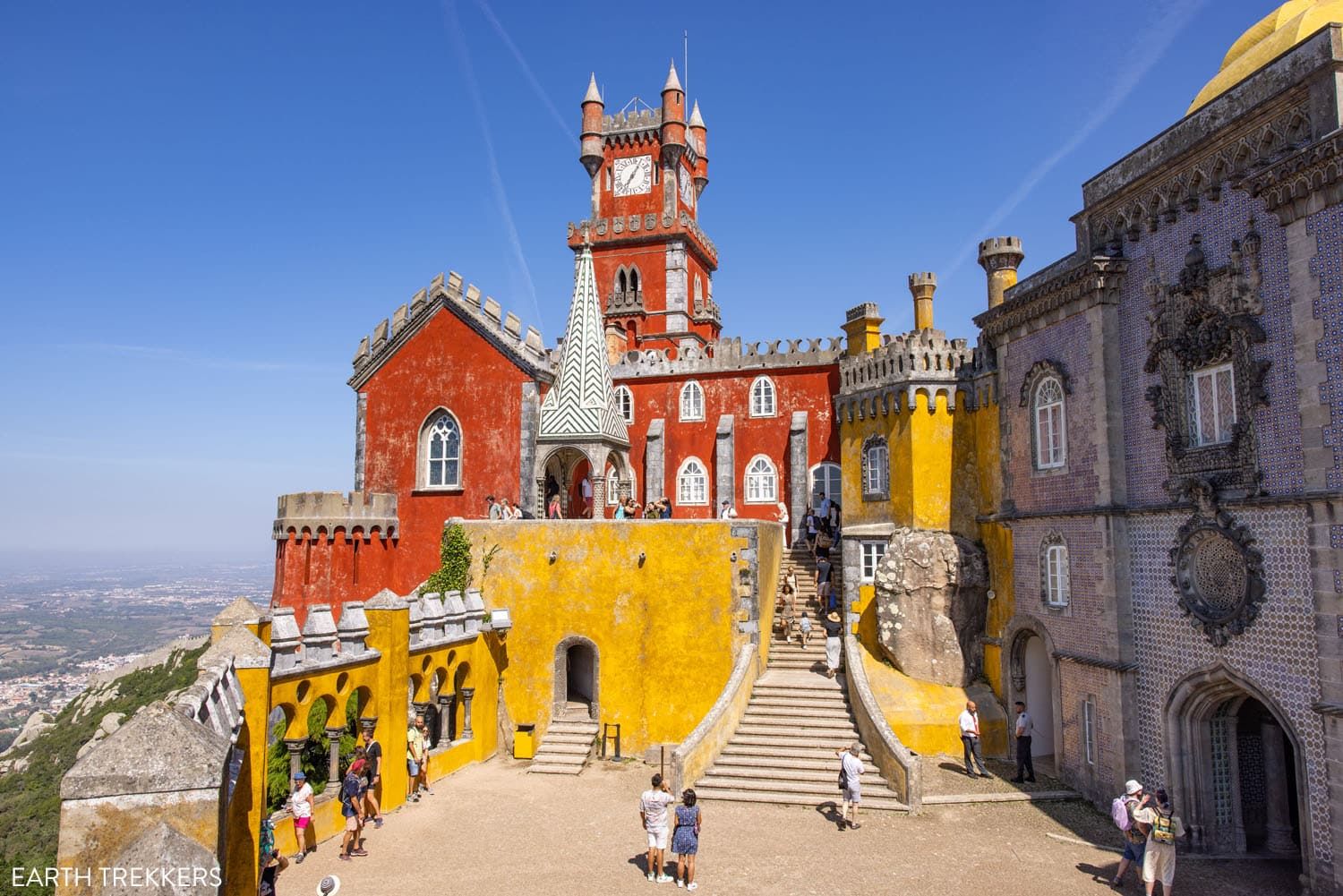
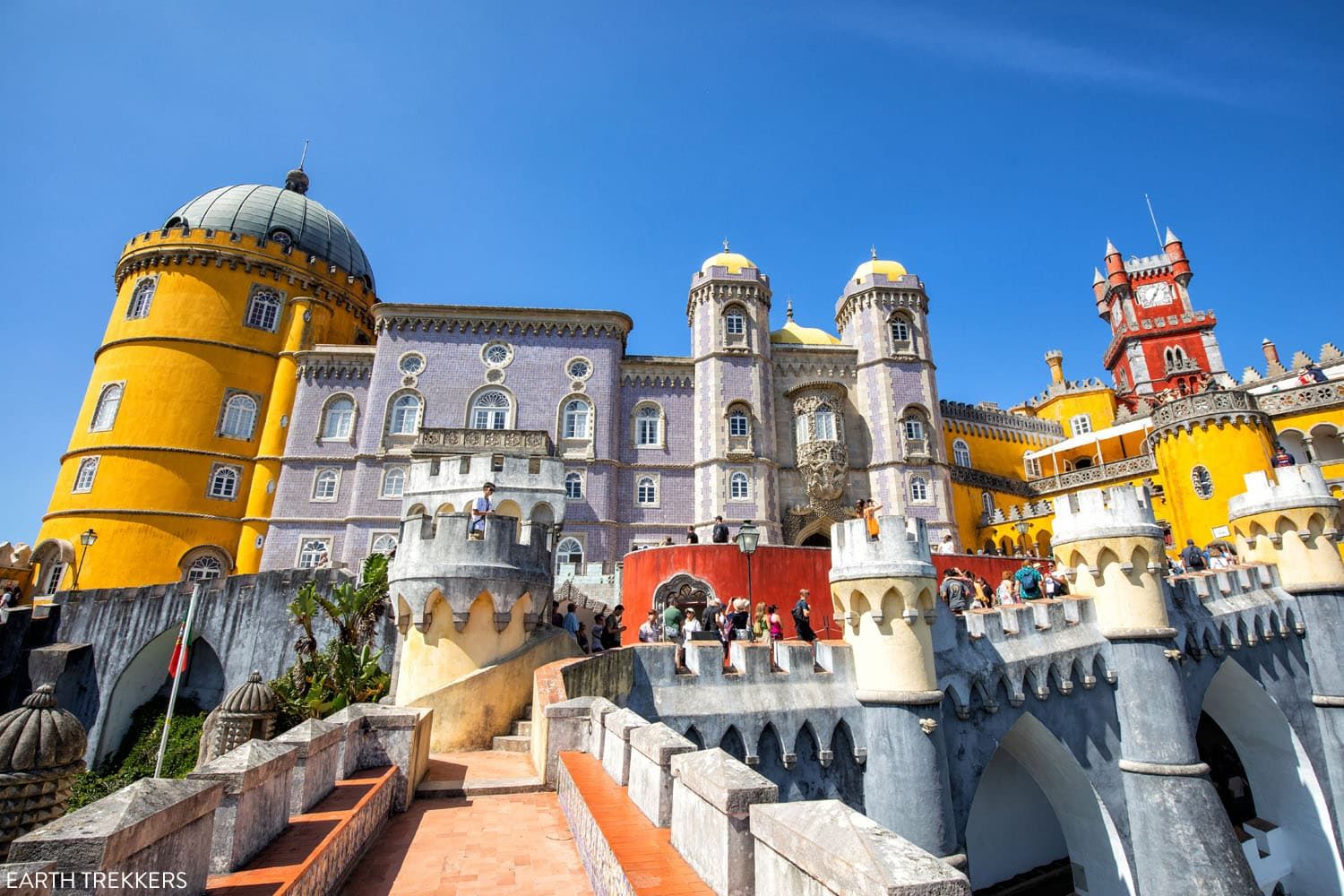
How to Visit Pena Palace
On a visit here, there is a lot to see and do. Photograph the colorful exterior of the palace, tour the interior of the palace, hike out to the High Cross, and stroll through Pena Park.
Pena Palace is located in Sintra, which is near Lisbon. There are other palaces and castles to include on your visit, such as Quinta da Regaleira and the Moorish Castle. Visiting Pena Palace and the other castles and palaces in Sintra is the most popular day trip from Lisbon.
To visit Pena Palace, you it is best to purchase a ticket in advance (this is one of the busiest places to visit in Portugal). Depending on what you see and do, a visit lasts 1 to 3 hours.
Here are a few guides to help you plan your visit:
Jerónimos Monastery
Jerónimos Monastery (Mosteiro dos Jerónimos), is an architectural masterpiece and one of the most beautiful buildings in Lisbon.
Commissioned by King Manual I in 1501 to celebrate Vasco da Gama’s successful voyage to India, the monastery exemplifies the Manueline architectural style (a richly ornate and intricate architectural style). It was completed in 1601.
The exterior is a stunning display of intricate carvings, with sea monsters, ropes, knots, and exotic flora. The highlight of the visit is seeing the cloister, with more delicate stone carvings depicting biblical scenes and maritime motifs.
Not only is Jerónimos Monastery one of the Seven Wonders of Portugal but it is also a UNESCO World Heritage Site.
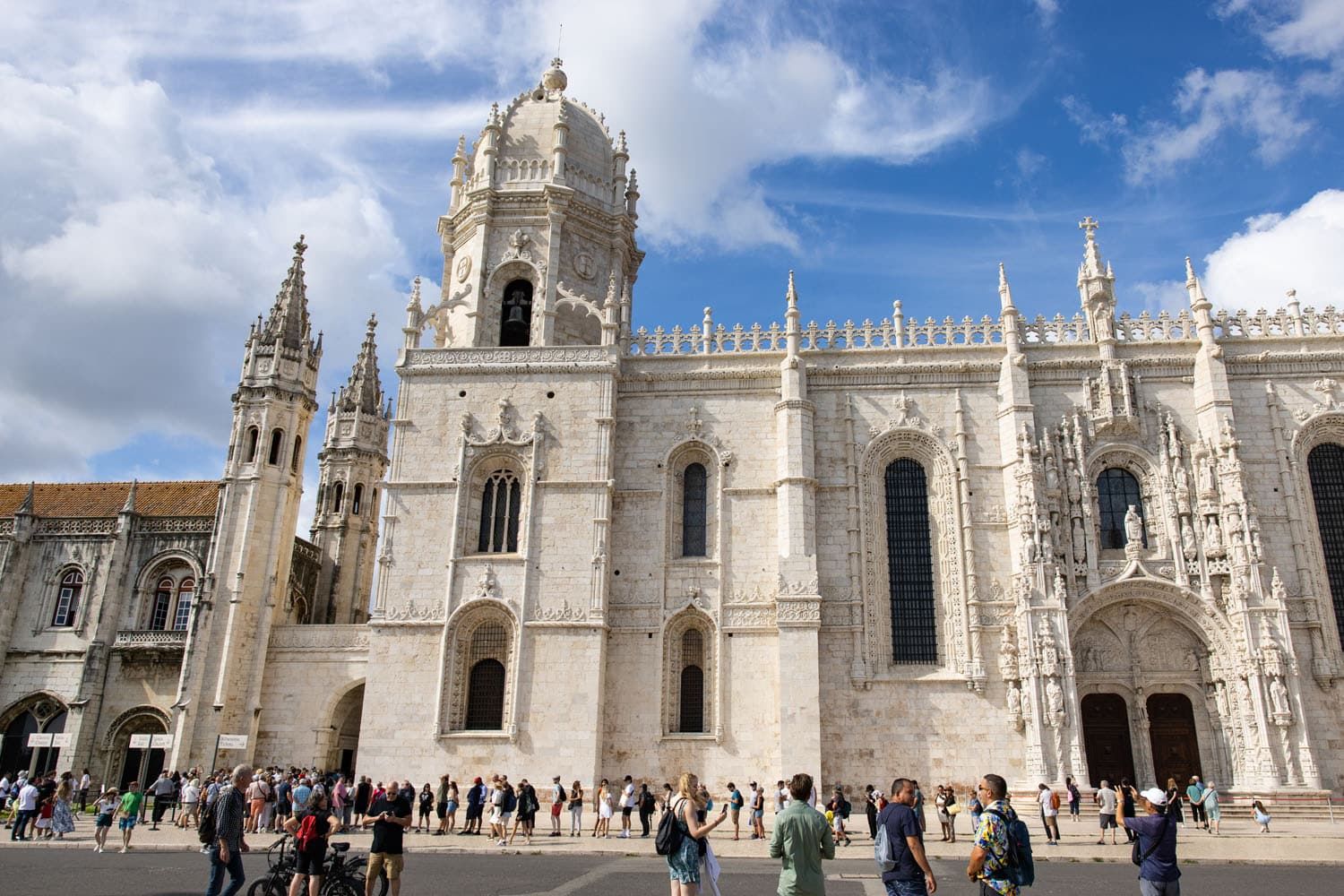

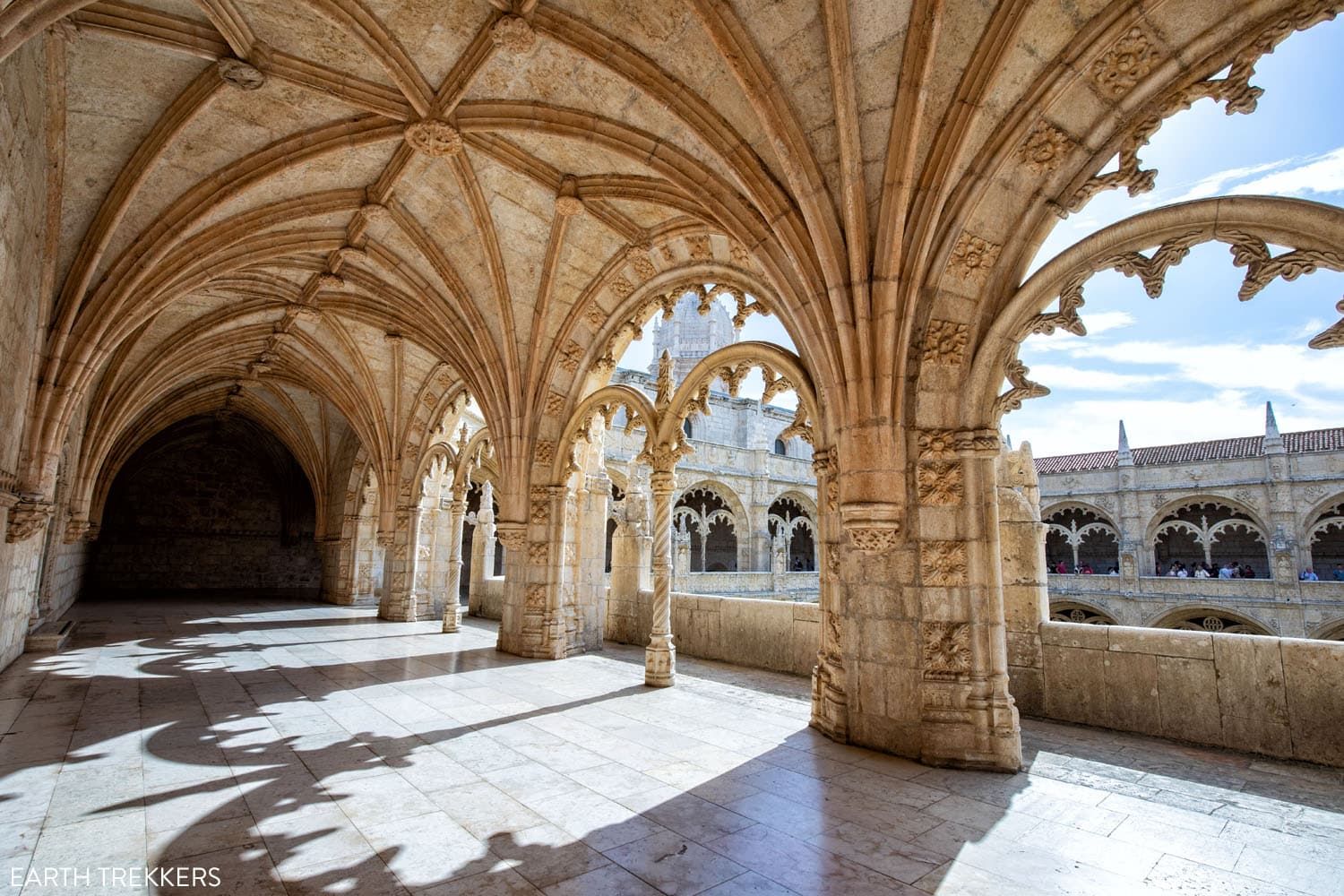
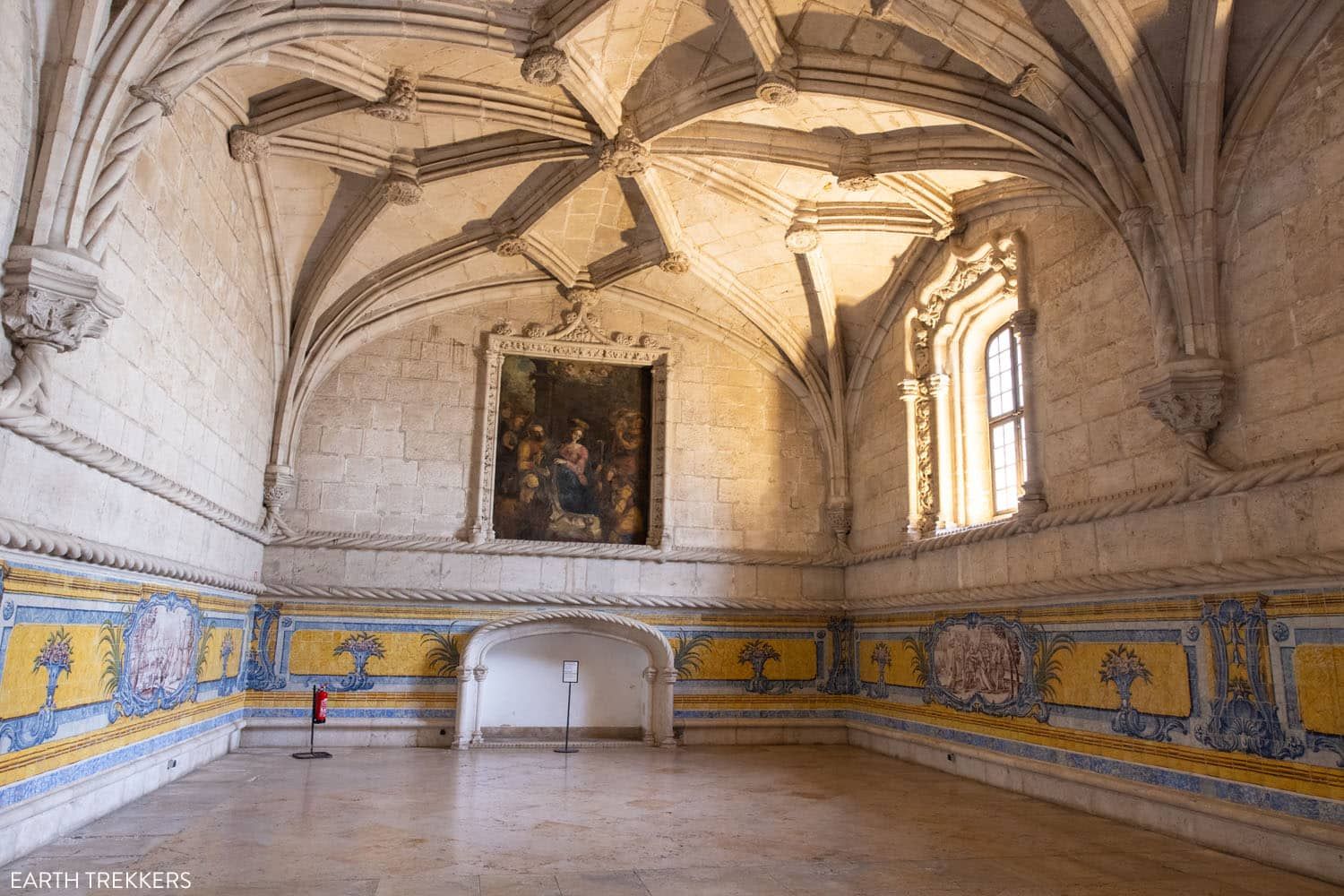
The Refectory in Jerónimos Monastery
The Church of Santa Maria de Belém is part of the Jerónimos Monastery. See the exquisitely carved South Portal and visit the tomb of Vasco da Gama, one of Portugal’s famous seafarers.
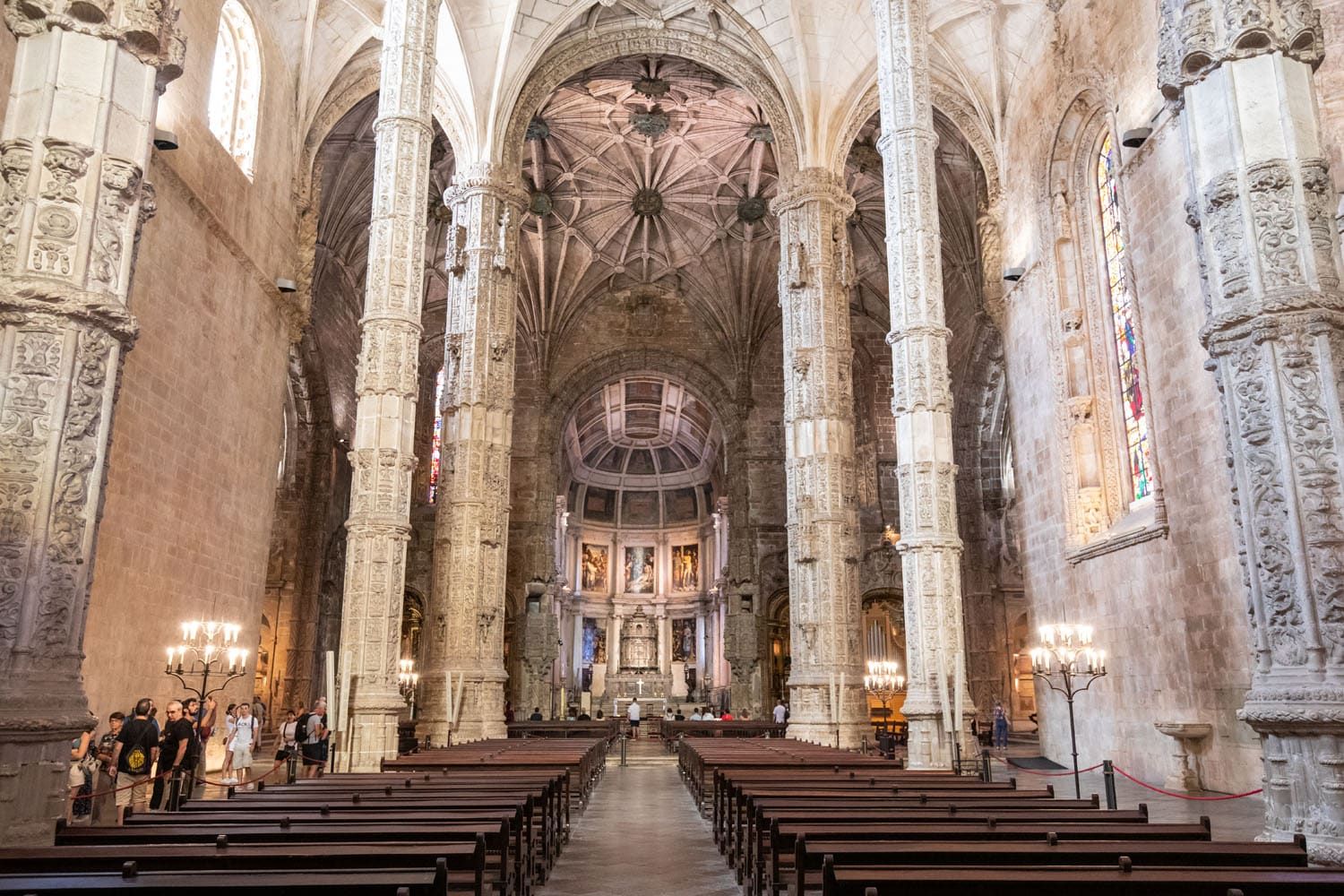
Church of Santa Maria de Belém
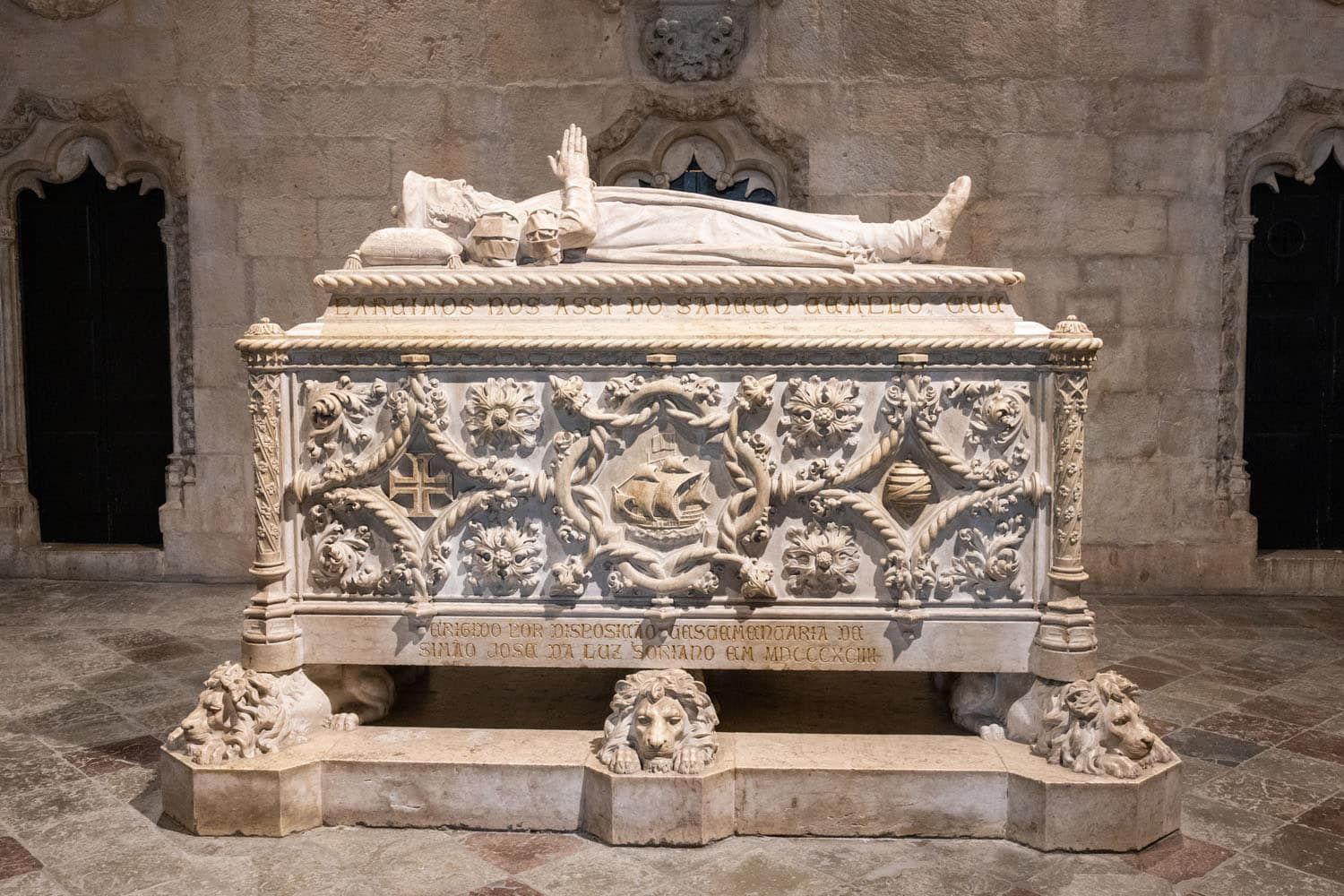
The tomb of Vasco da Gama
How to Visit Jerónimos Monastery
Line to Enter: There are two different lines at the entrance to Jerónimos Monastery. The line to the left is to enter the monastery and the line to the right is to enter Santa Maria de Belém Church. There are signs indicating these lines so confirm that you are getting in the correct one.
Tickets: If you have the Lisbon Card, this serves as your ticket into the monastery. Or, purchase your tickets at the ticket stand across the street from the monastery.
Avoiding a Long Wait in Line: The line to enter the monastery is longest from 10 am to 4 pm. We have heard stories of people waiting an hour or longer to enter the monastery. Get here early or late in the day to avoid the longest lines.
Belém Tower
Also located in Lisbon, Belém Tower is a UNESCO World Heritage Site and the symbol of Europe’s Age of Discovery.
The term Age of Discovery refers the period during the 15th to 17th centuries when seafarers from Europe explored and conquered regions around the globe. The main events were Christopher Columbus sailing to America and Magellan circumnavigating the globe, but Vasco da Gama’s voyage around the Cape of Good Hope unveiled an important route to India.
Belém Tower took several years to build and was completed in 1516. It is part bastion and part tower.
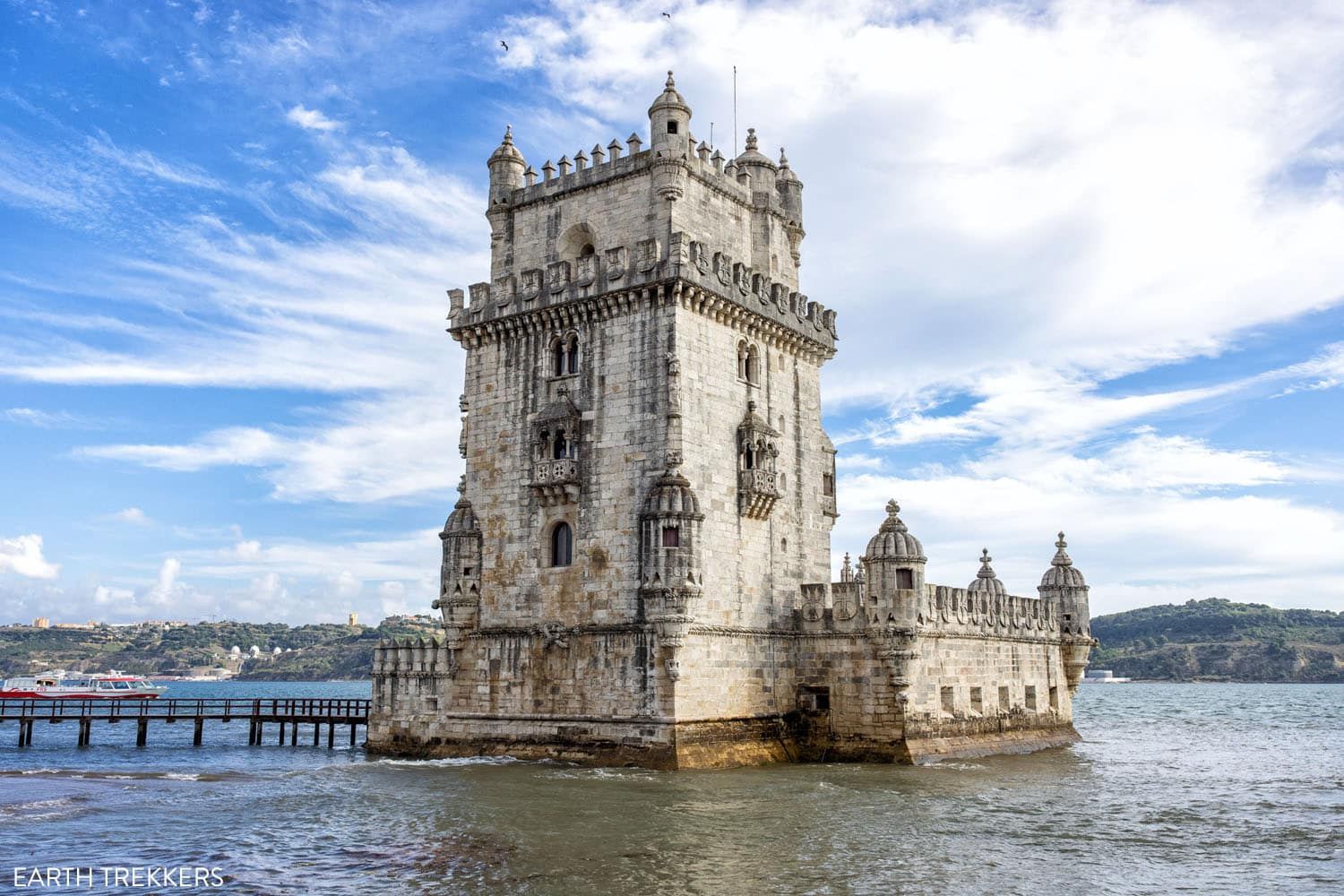
How to Visit Belém Tower
You can simply view the tower from the promenade or, if you are interested, you can enter the tower. It is best to purchase your ticket in advance or wait in the line that forms in front of the tower. For the shortest wait in line, get here at opening time (9:30 am).
Castle of Guimarães
Constructed in the 10th century with the purpose of defending the nearby monastery from threats posed by Norsemen and Moors, the Castle of Guimarães is a well-preserved example of medieval Portuguese castles. Its construction is associated with the origins of the Portuguese nation.
The Castle of Guimarães is located in the small town of Guimarães in northern Portugal. This town is also famous for its historic center, which is listed as a UNESCO World Heritage Site.
Guimarães makes a great day trip from Porto and can easily be combined with Braga and Bom Jesus do Monte.
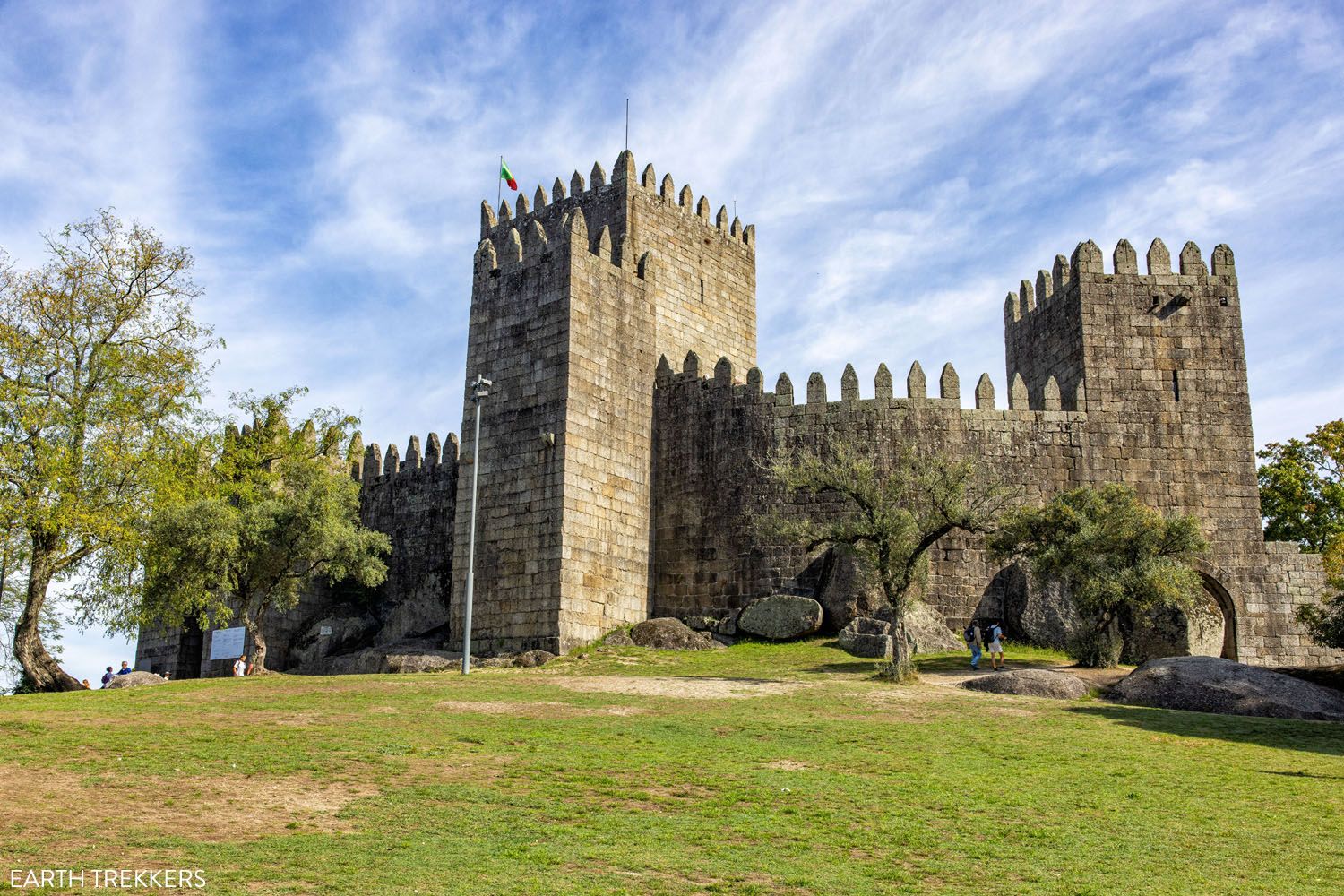
Guimarães Castle
How to Visit the Castle of Guimarães
Currently, the castle is undergoing a restoration project, so it is only partially open. Even so, it is beautiful on the outside and going for a stroll around the castle is one of the best things to do while in Guimarães.
It takes about half of a day to visit the town of Guimarães. Plan your visit with our article Best Things to Do in Guimarães and learn how to include Braga.
Batalha Monastery
This Dominican convent was constructed between 1386 and 1517, in commemoration of the 1385 Battle of Aljubarrota. On the battlefield during the 1385 Battle of Aljubarrota, King Joao I of Portugal made a promise to the Virgin Mary that he would build a monastery if he was victorious over the Castilians.
This Dominican convent was constructed between 1386 and 1517 and then further enlarged again in the mid-16th century. It later became a burial church for Portuguese royalty.
On a visit here, you will see the church (the nave is incredible to see), visit the Founder’s Chapel (the first royal pantheon in Portugal), the royal cloisters, and the unfinished chapels. The Batalha Monastery is also a UNESCO World Heritage Site.
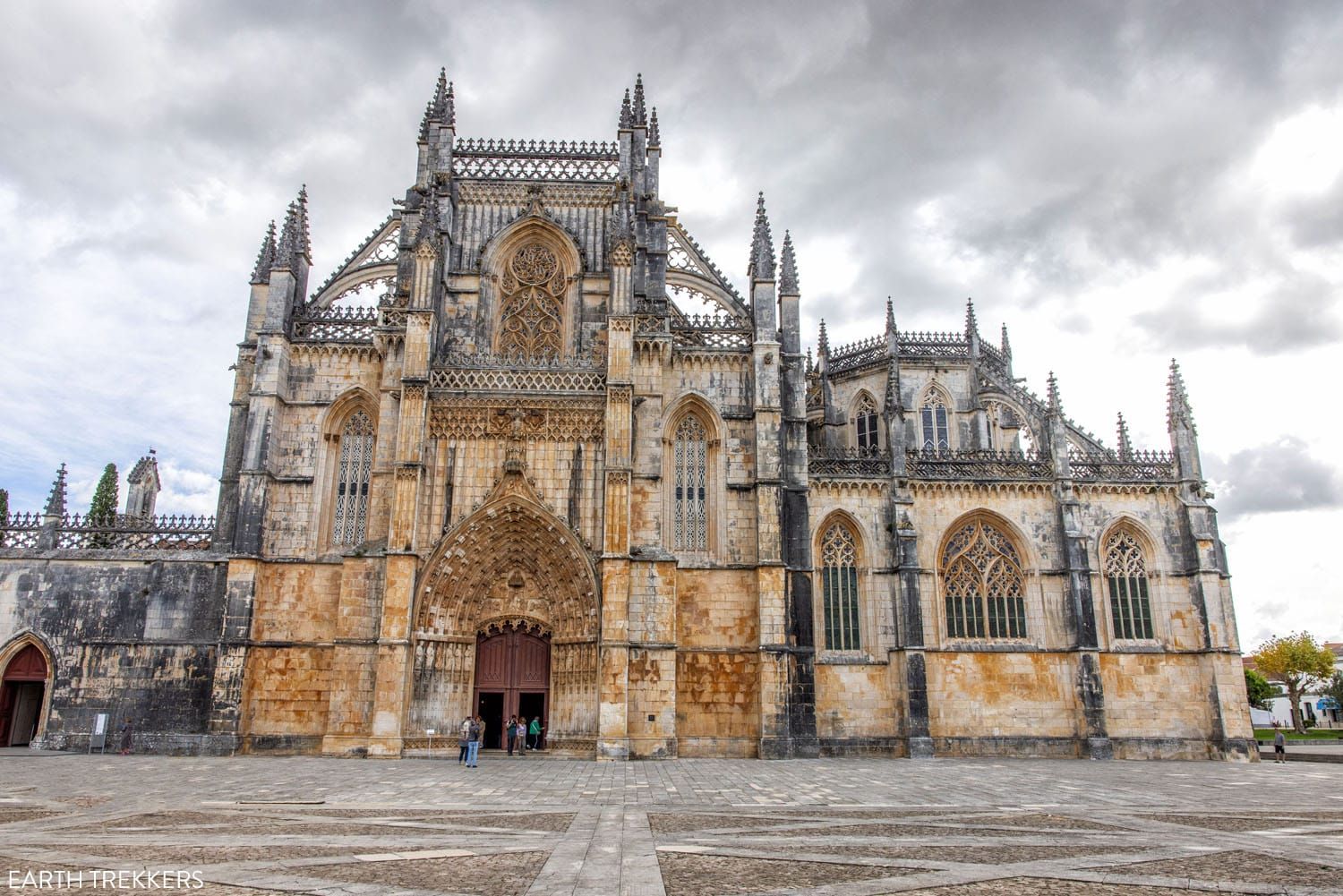
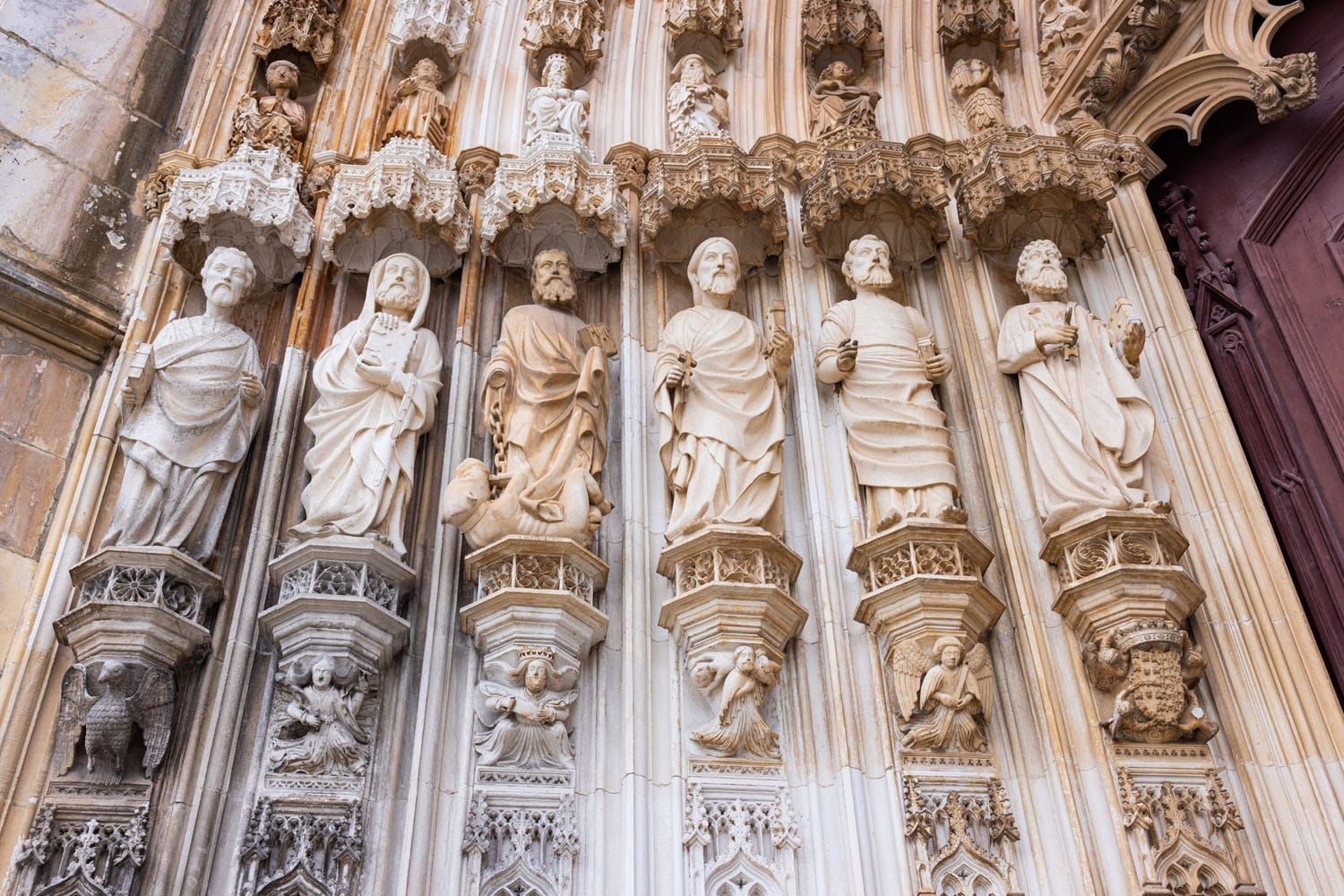
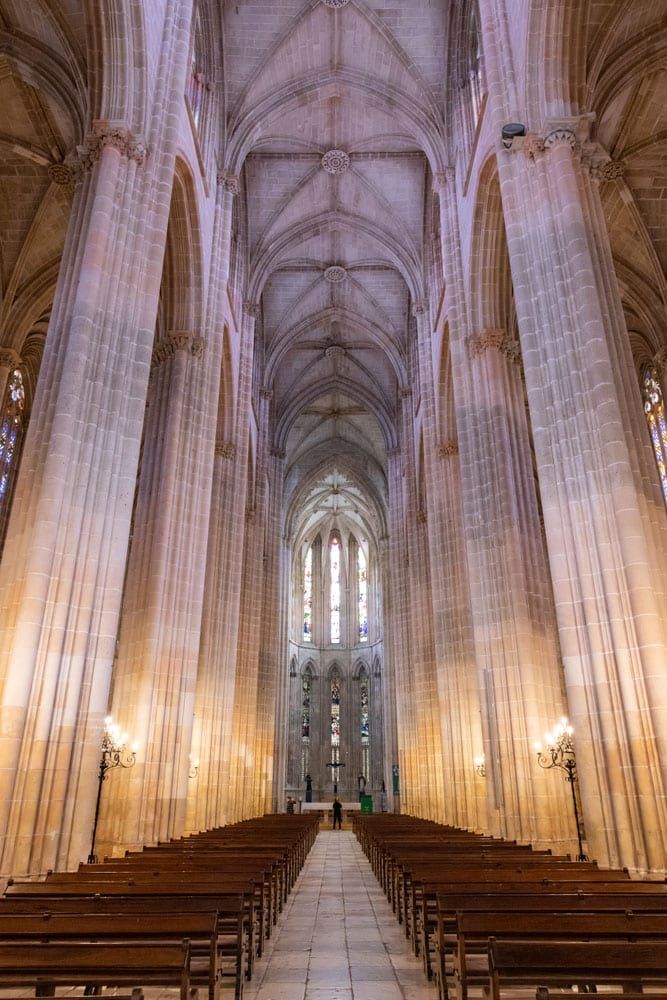
The central nave
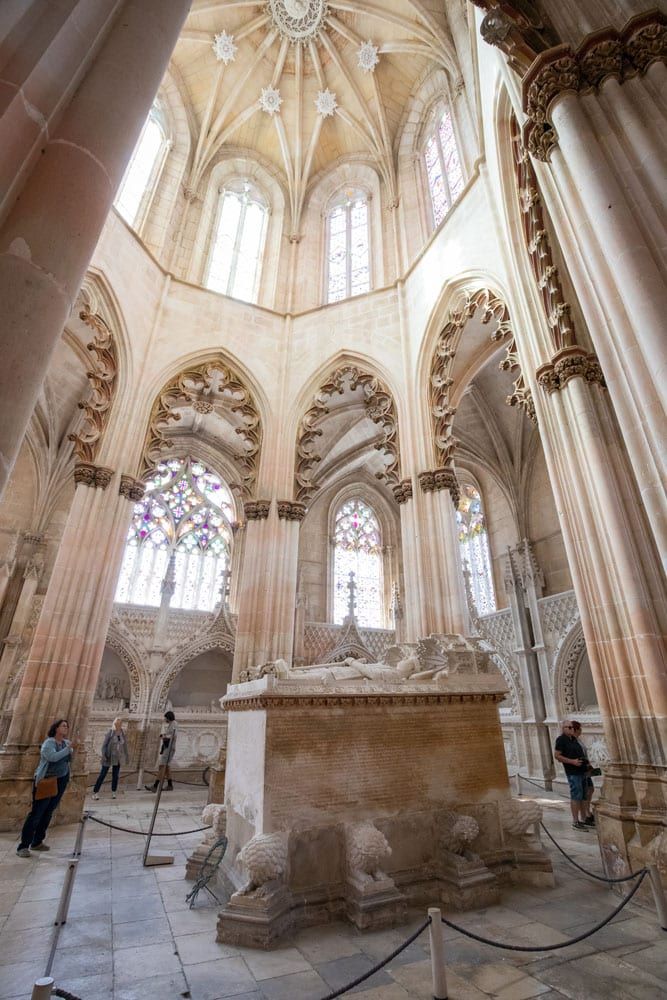
The Founder’s Chapel
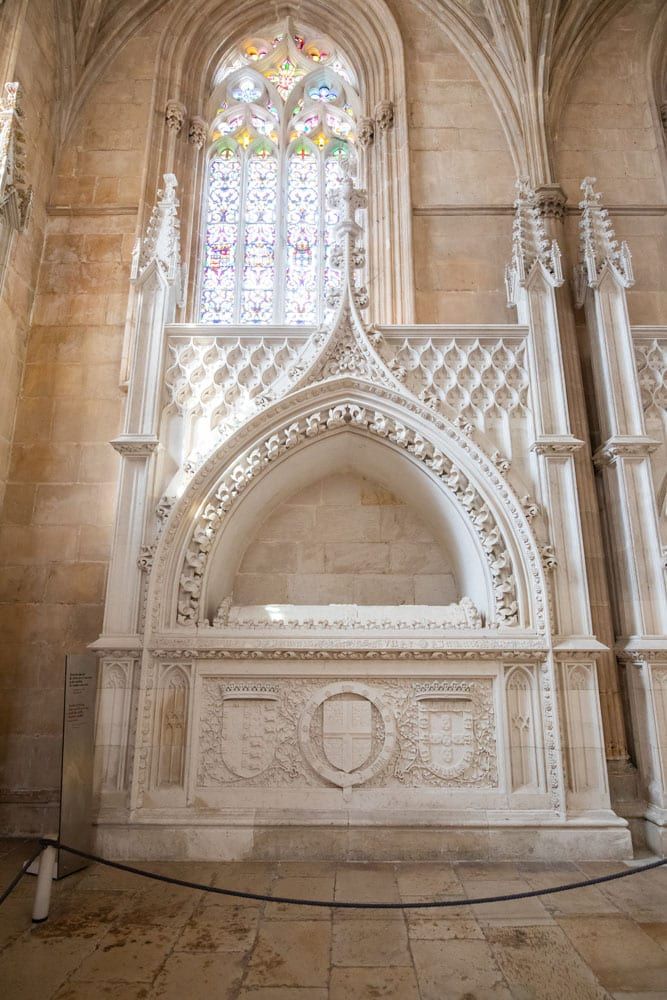
Tomb King Afonso V
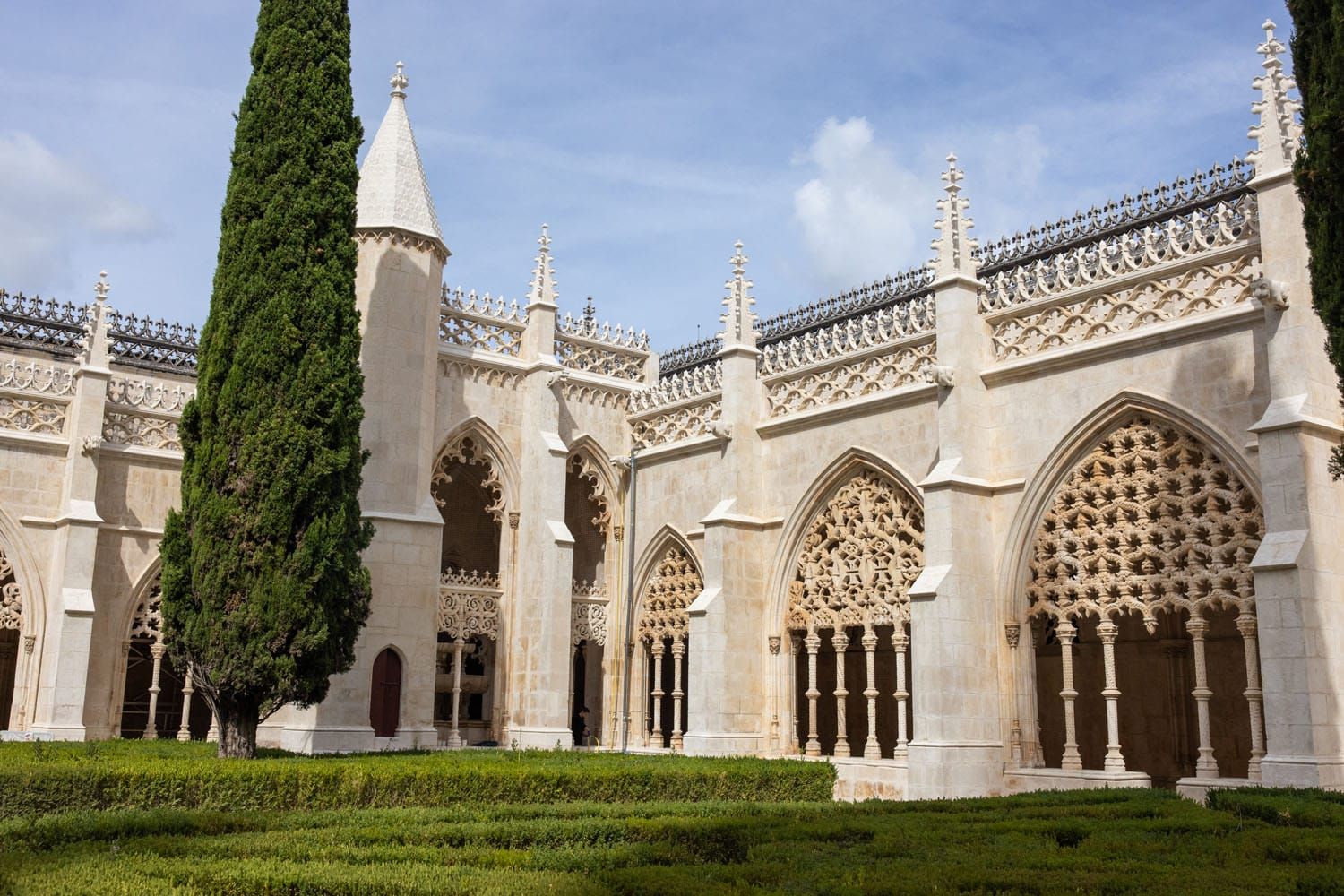
The Royal Cloister
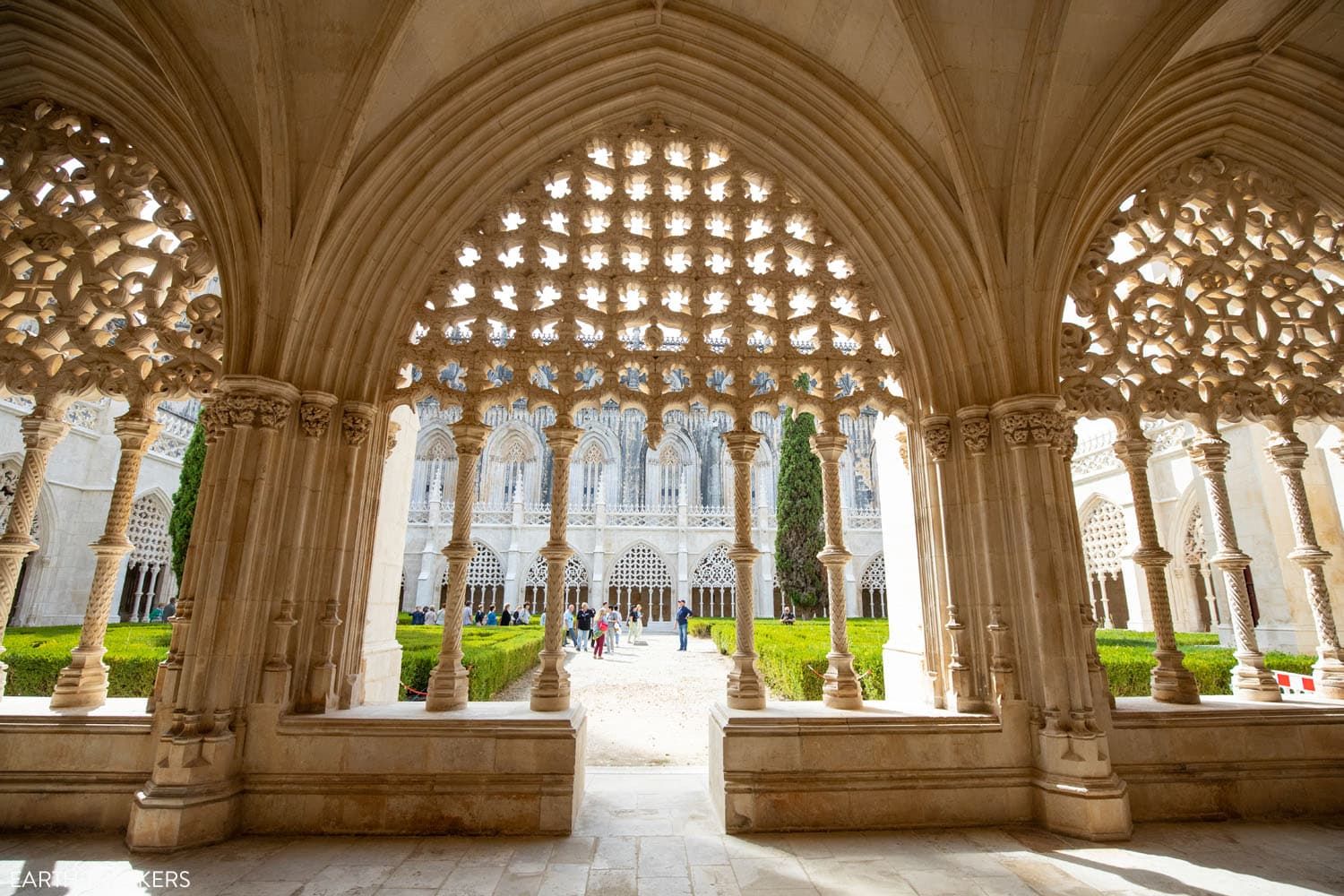
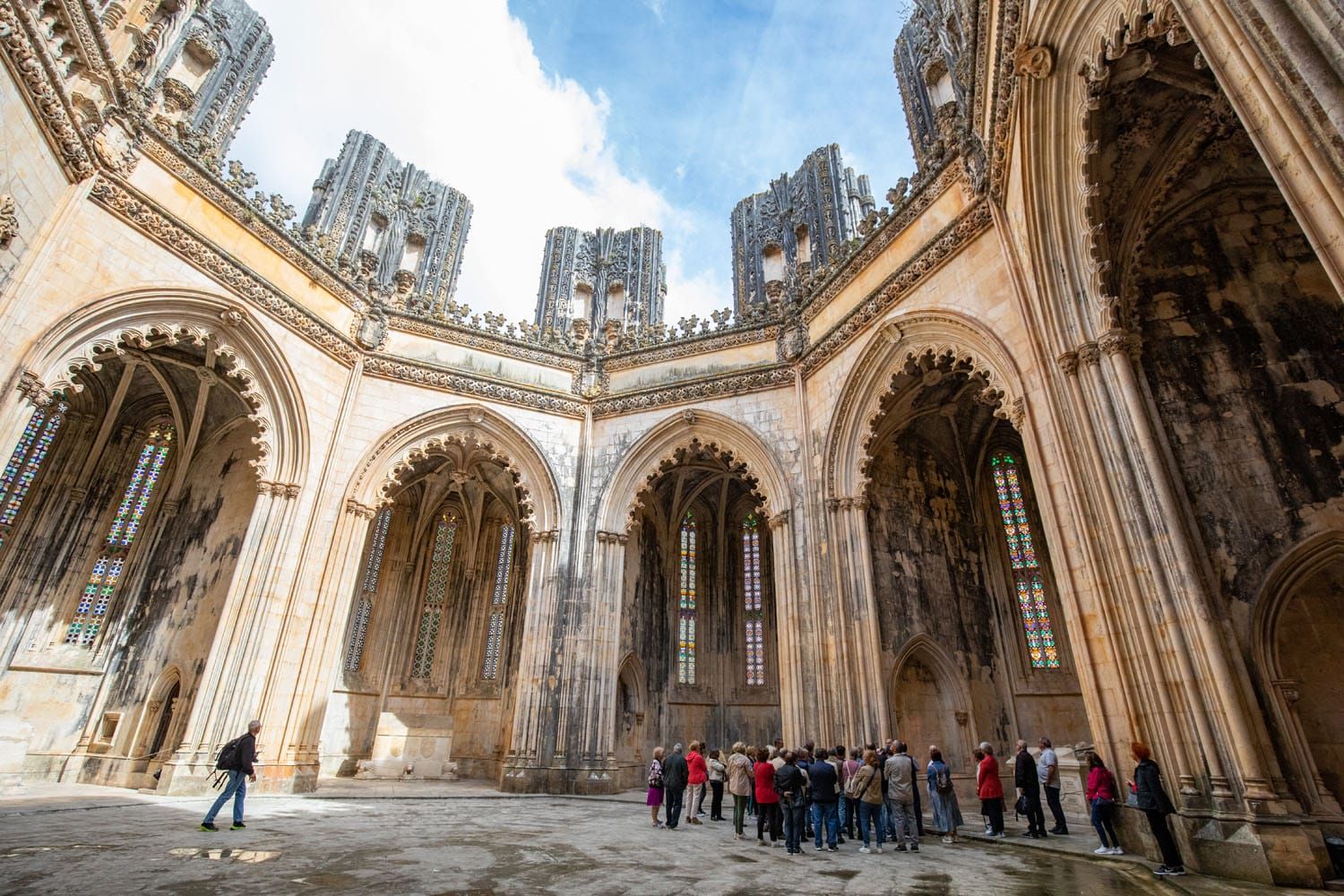
The Unfinished Chapels
How to Visit the Batalha Monastery
The Batalha Monastery is located in Batalha, 145 km north of Lisbon and 30 km northeast of Nazare. This monastery is located near Alcobaça Monastery, Fátima (an important pilgrimage site), Tomar (where you can visit the Convent of Christ, one of the finalists for the Seven Wonders of Portugal), and Nazaré (a coastal town famous for its giant waves). In one busy day, you can visit all of these sites. It also makes a popular day trip from Lisbon.
We visited Batalha Monastery, Alcobaça Monastery, Fátima, and Tomar on a day trip from Nazaré.
Learn more about the monastery on the official website.
Alcobaça Monastery
The Alcobaça Monastery is a Gothic monastery that was built by monks of the Cistercian Order. Construction began in 1178.
There is a lot to see here, but the highlights are the church, the multiple cloisters, the royal tombs, the old and new kitchen, and the dormitory.
The Alcobaça Monastery is a UNESCO World Heritage Site.
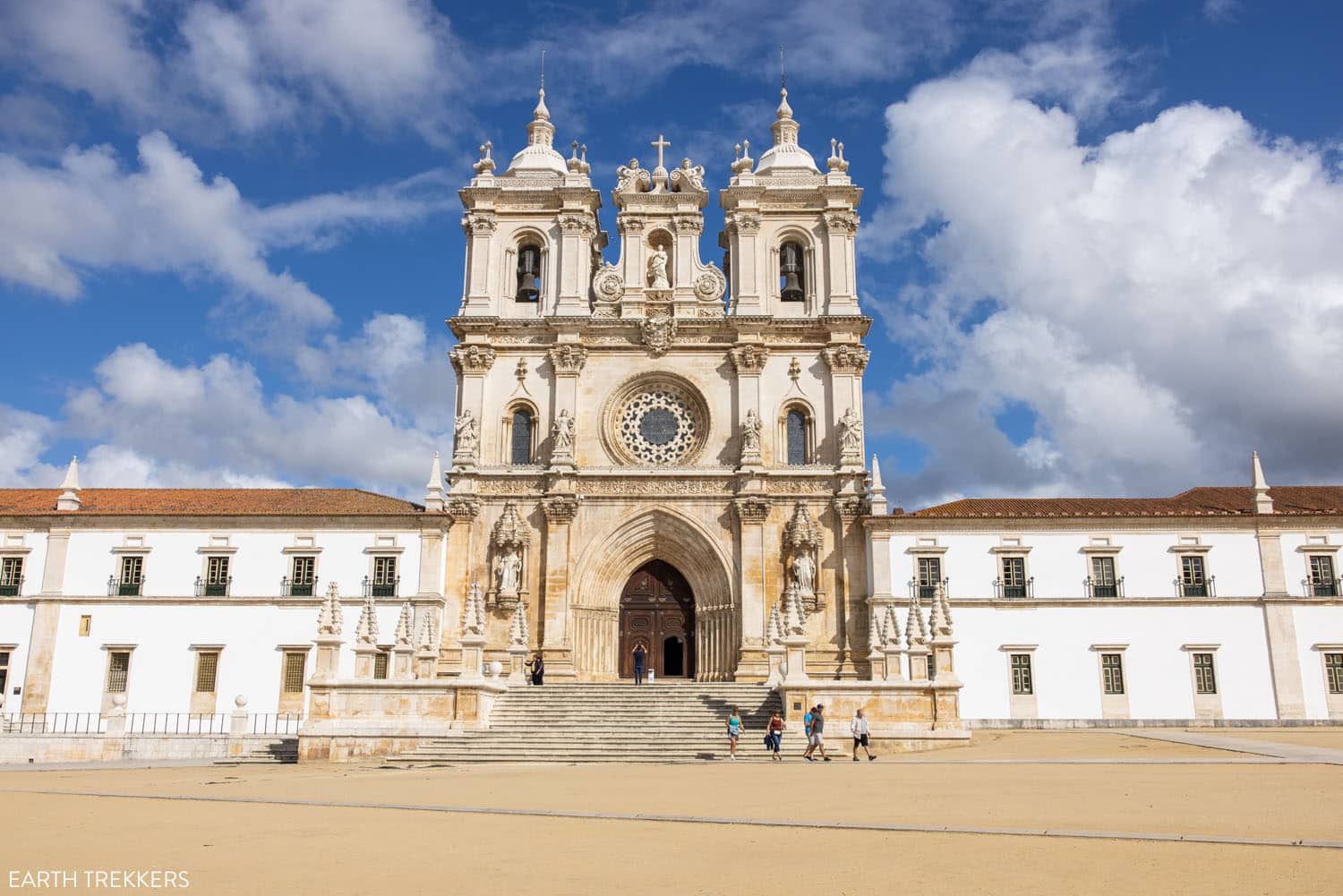
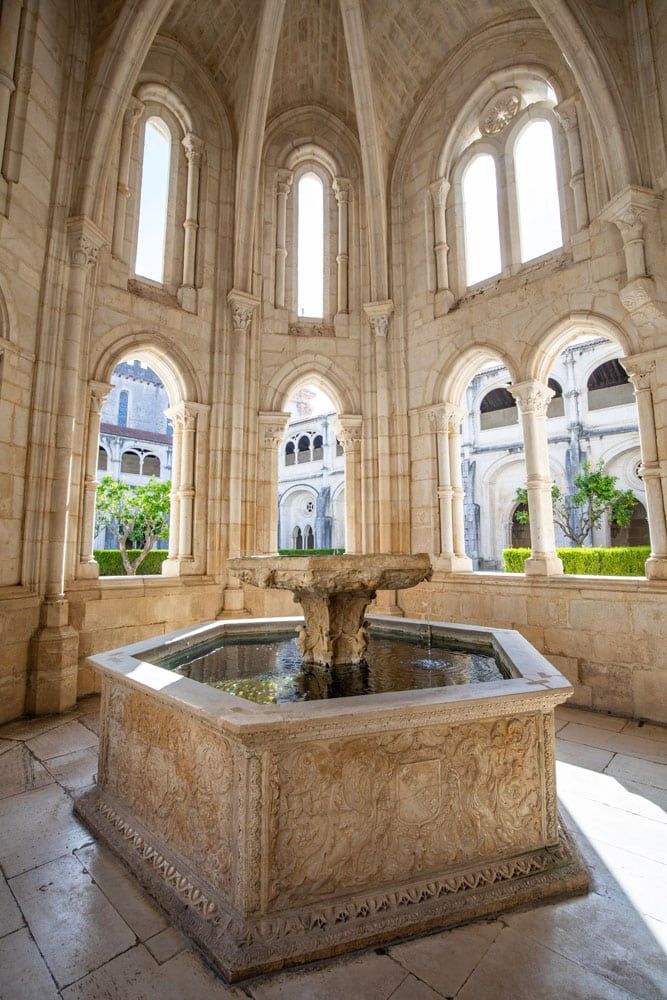
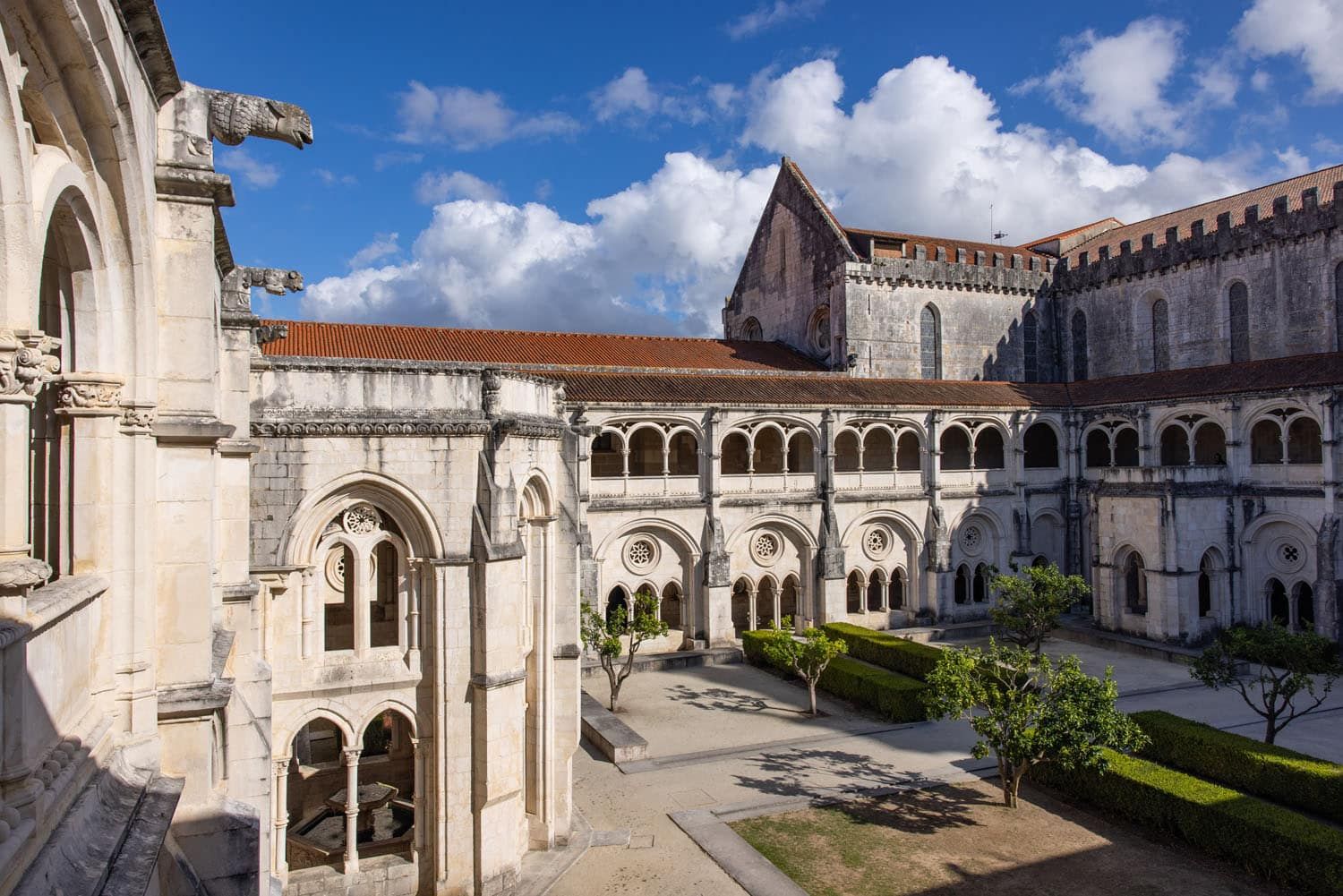
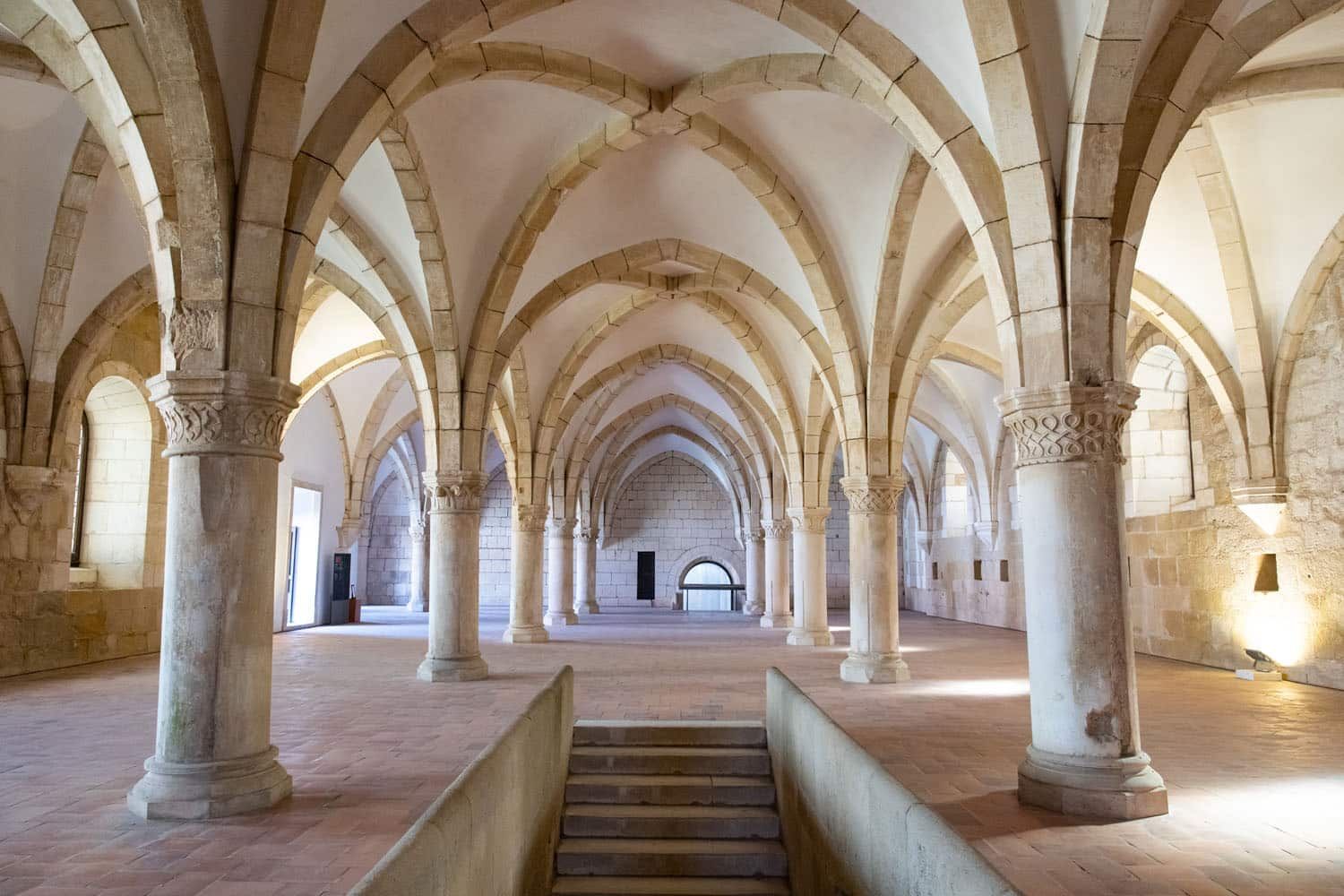
The Dormitory
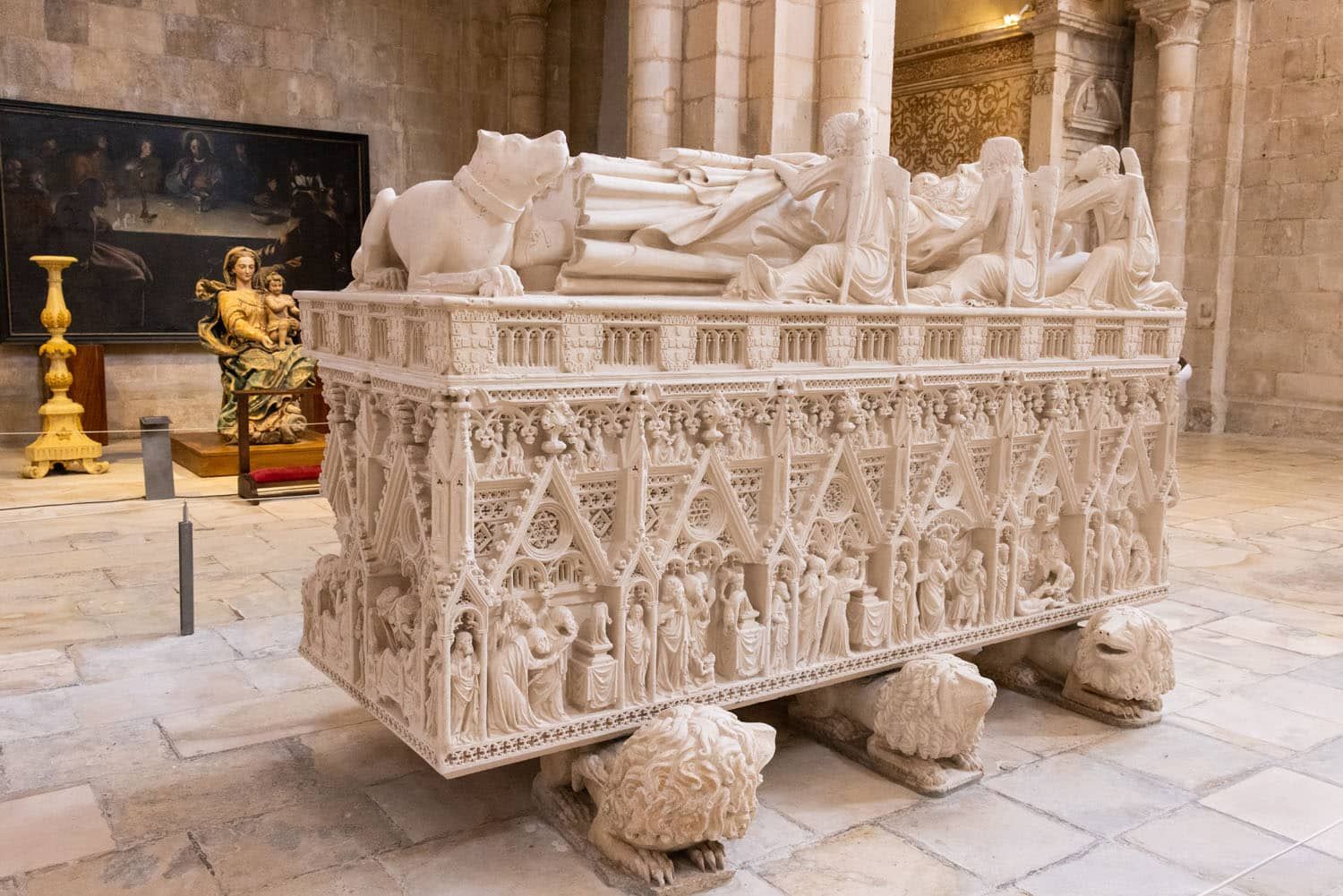
The Tomb of King Pedro
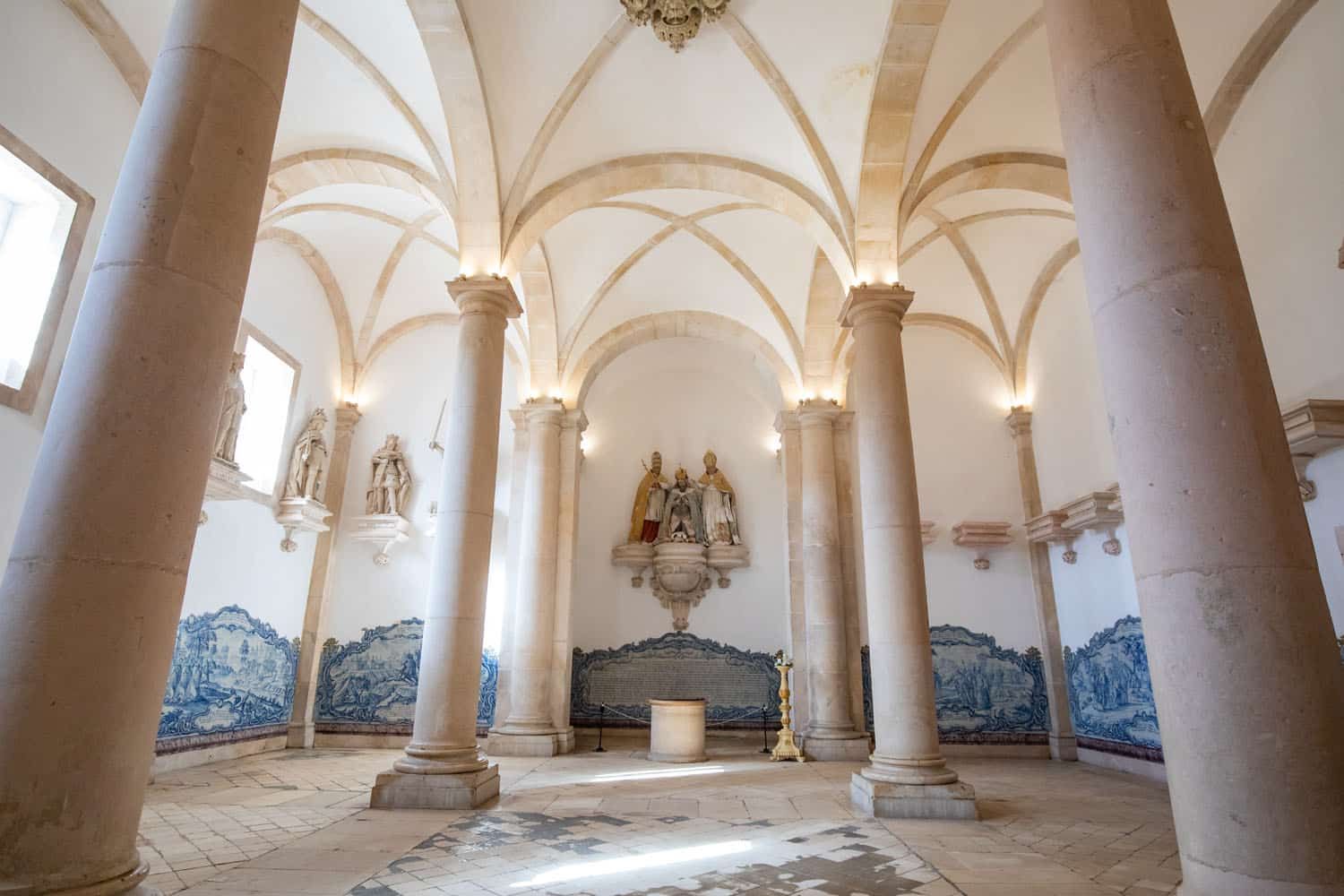
The Room of the Kings
How to Visit Alcobaça Monastery
Alcobaça Monastery is located in Alcobaça, 120 km north of Lisbon and 15 km east of Nazaré. Like Batalha Monastery, Alcobaça Monastery can be visited in one busy day, combining it with Batalha Monastery, Fátima, Tomar, or Nazaré.
Learn more about the monastery and get hours and pricing on the official website.
More Finalists of the Seven Wonders of Portugal
Below is a list of the remainder of the 21 finalists of the Seven Wonders of Portugal.
- Castle of Marvão (Marvão)
- Convent of Christ (Tomar)
- Queluz Palace (Queluz)
- Castle of Almourol (Vila Nova da Barquinha)
- University of Coimbra (Coimbra)
- Palace of the Dukes (Vila Viçosa)
- Palace of Mafra (Mafra)
- Fortress of Sagres (Vila do Bispo)
- Roman Temple (Évora)
- Ruins of ConÍmbriga (Condeixa-a-Nova)
- Clerigos Church (Porto)
- Church of São Francisco (Porto)
- Castle of Monsaraz (Reguengos de Monsaraz)
- Mateus Palace (Vila Real)
Are the Seven Wonders of Portugal Worth Visiting?
These seven landmarks are symbols of Portugal’s rich cultural heritage. Many of them also hold prestigious UNESCO World Heritage status or are located in towns that share this recognition.
These grand old palaces, castles, and monasteries are interesting to visit, easy to get to, and very easy to include on a trip through Portugal and visiting a few of these is well worth your time.
If you have any questions about the Seven Wonders of Portugal, let us know in the comment section below.
More Portugal Travel Guides & Itineraries
We have TONS more information about Portugal in our Portugal Travel Guide, including Lisbon, Sintra, Porto, the Algarve, the Douro Valley, and Madeira.

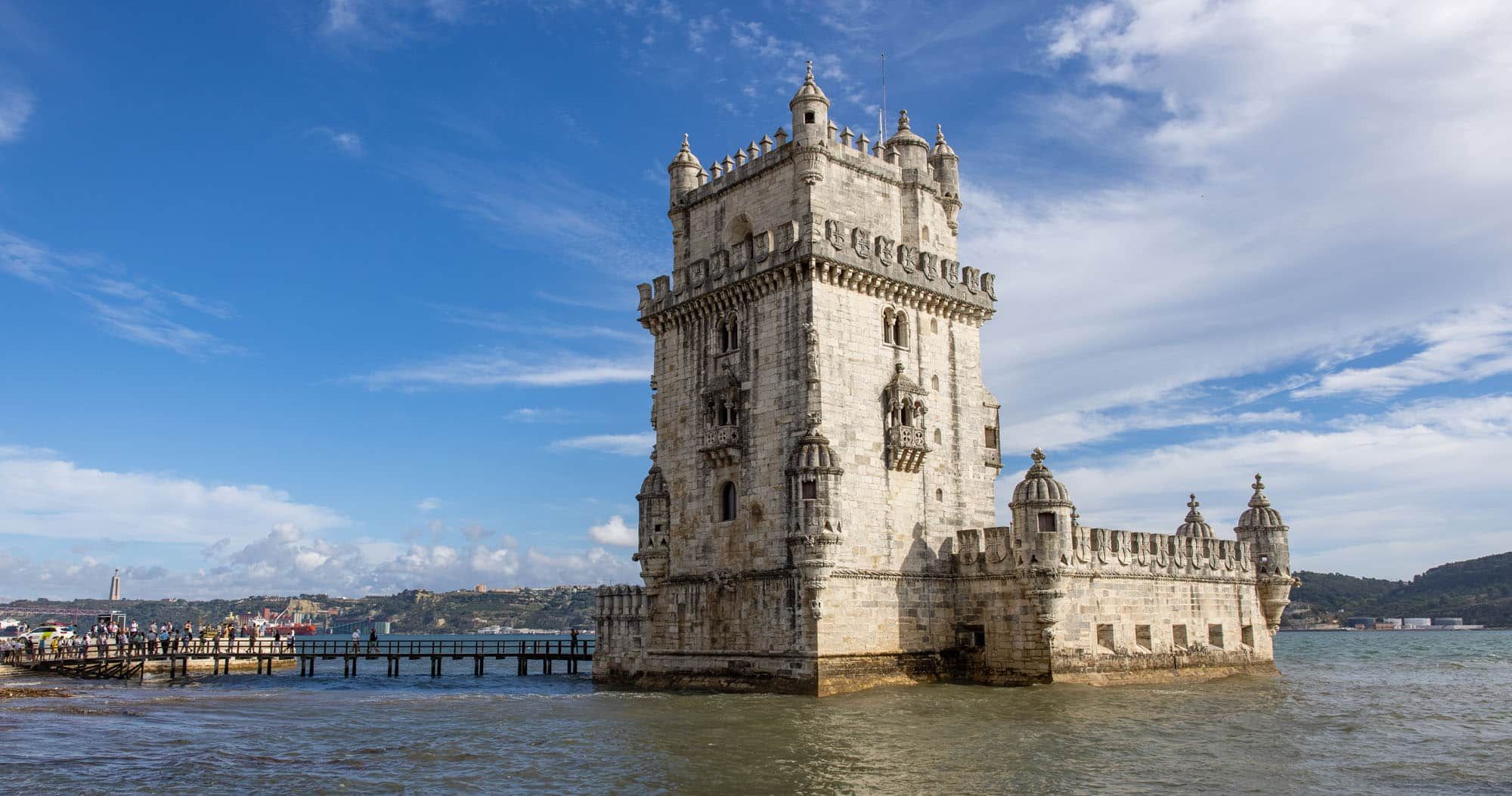

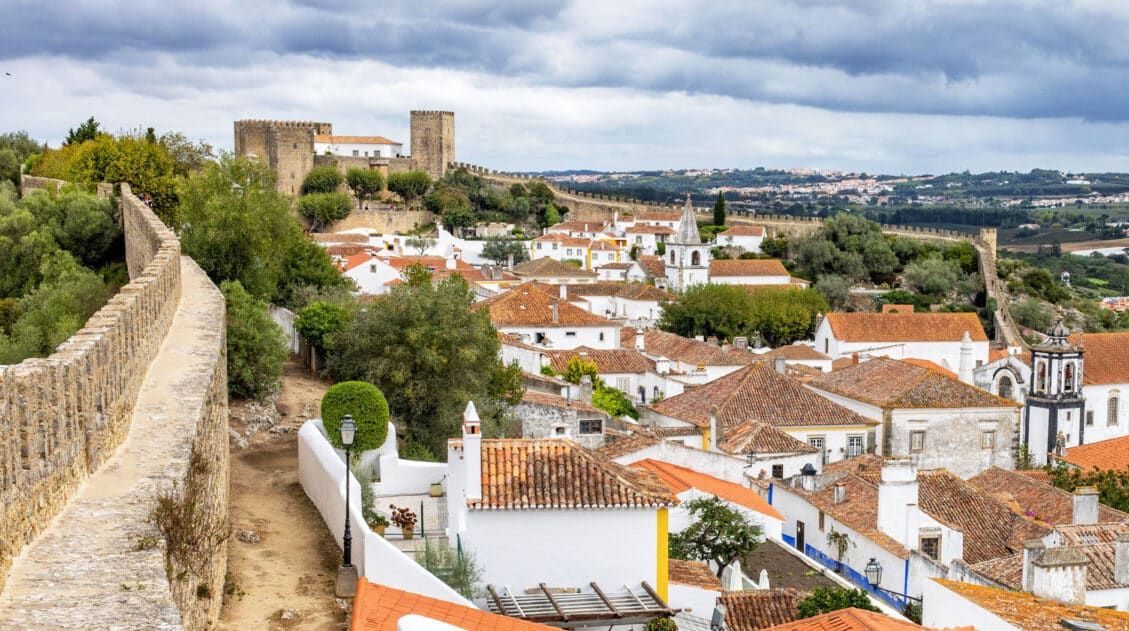
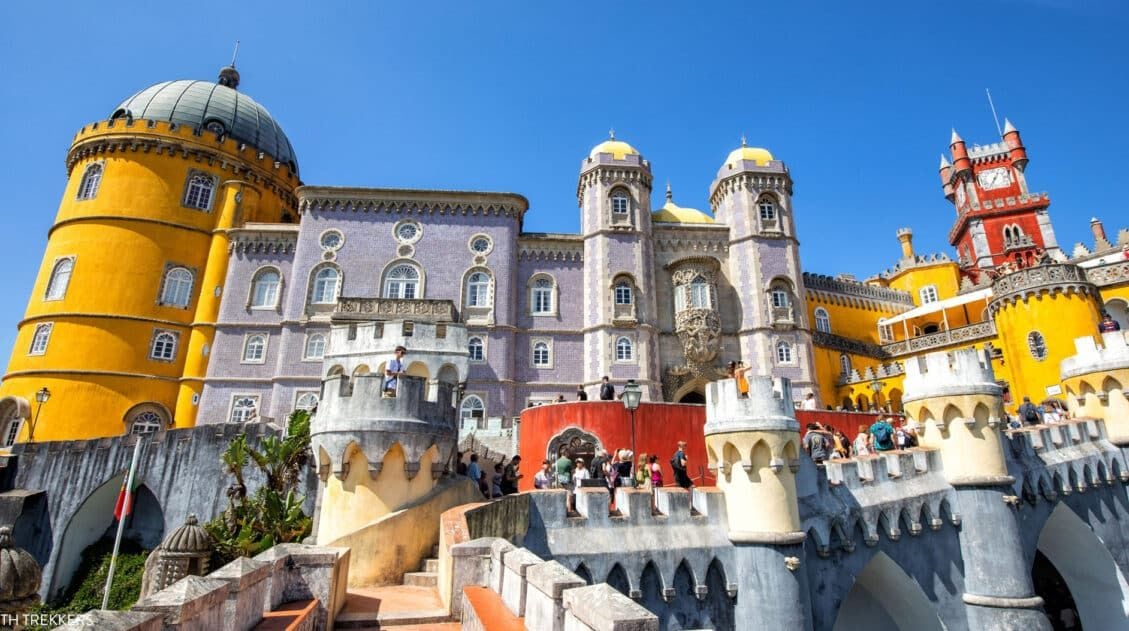
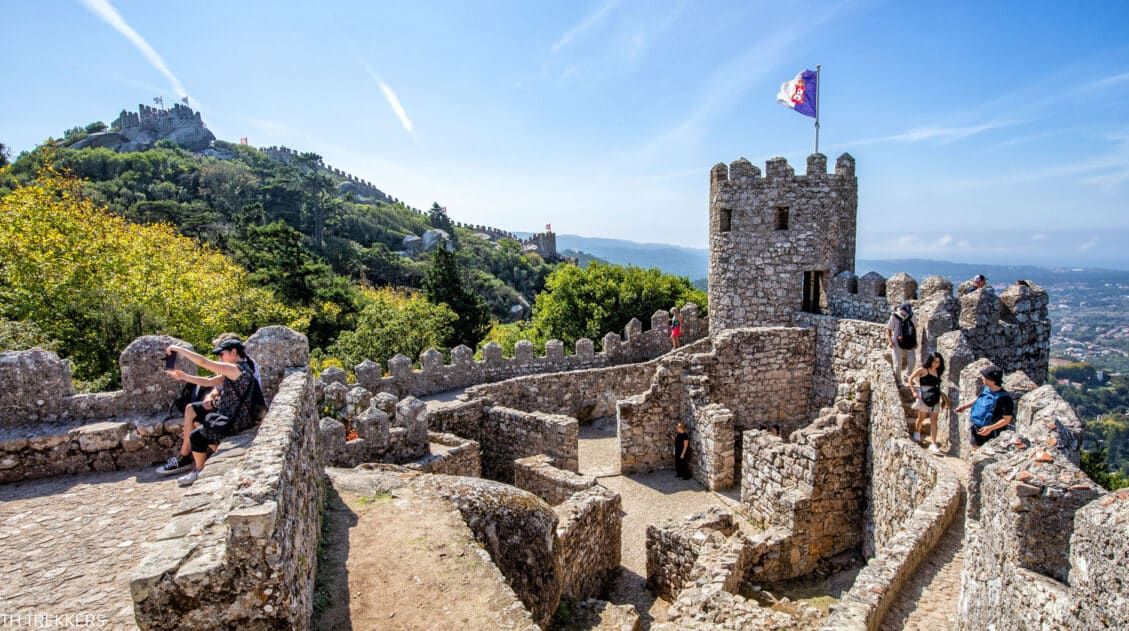
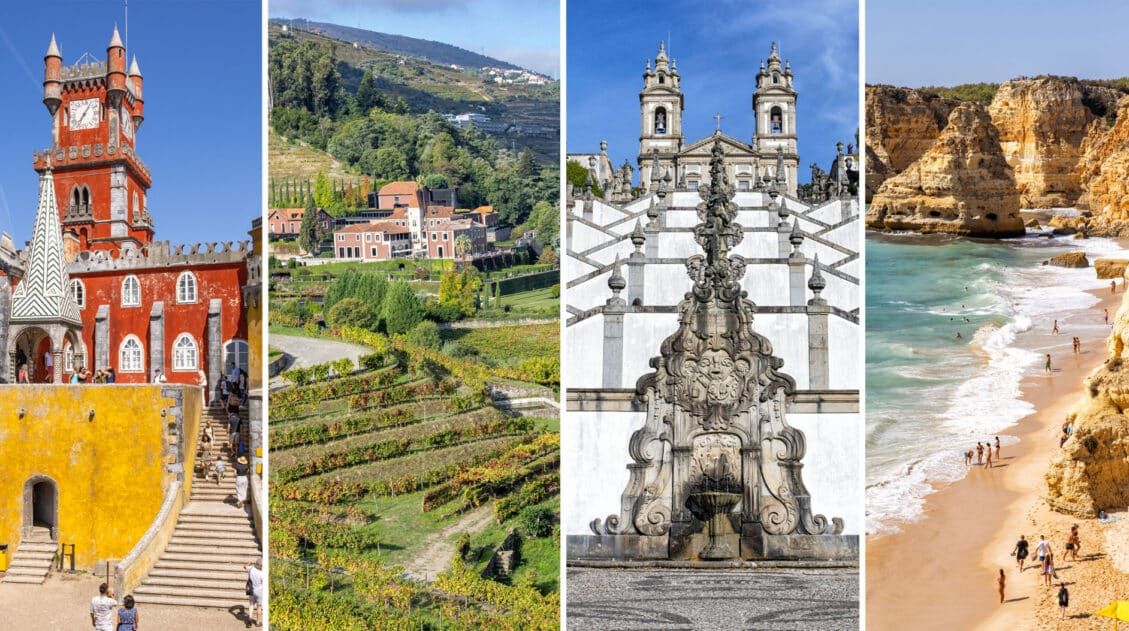
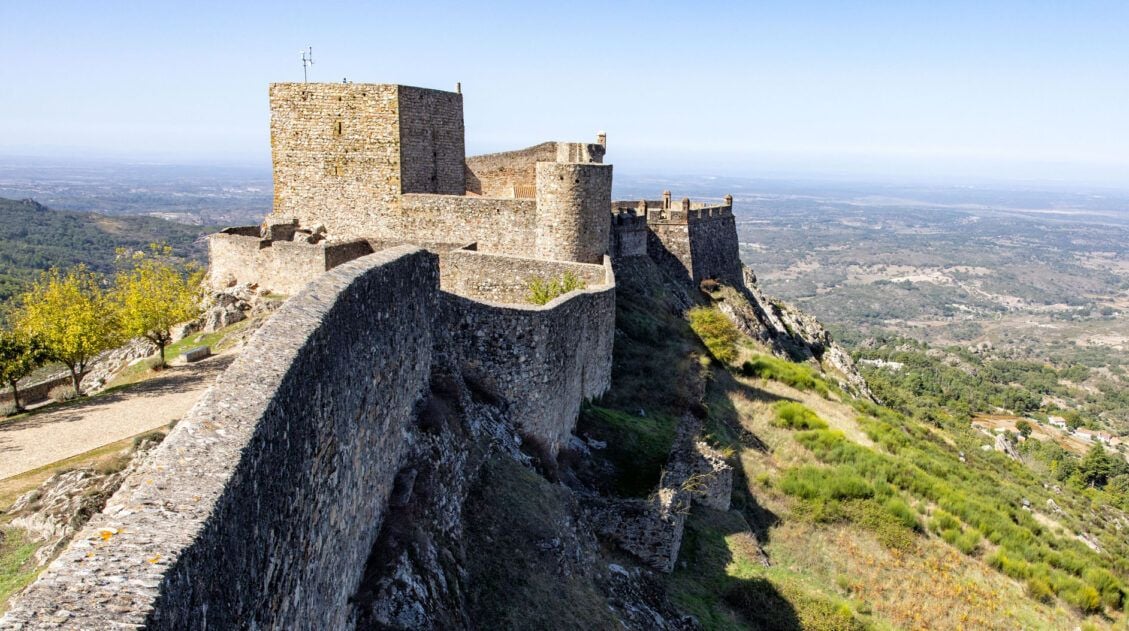
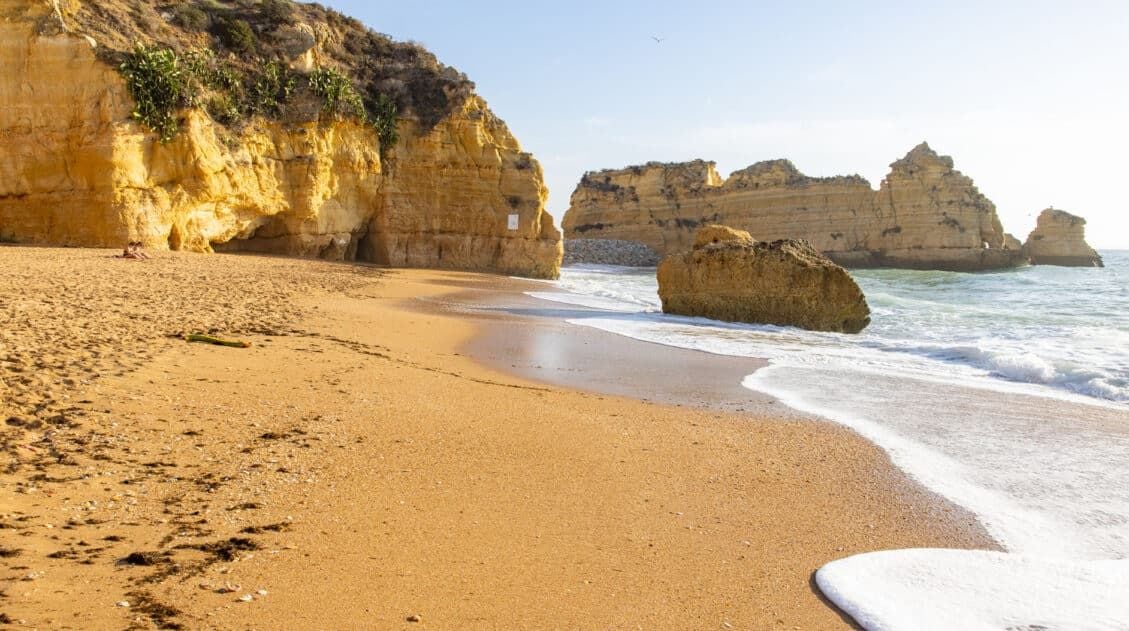
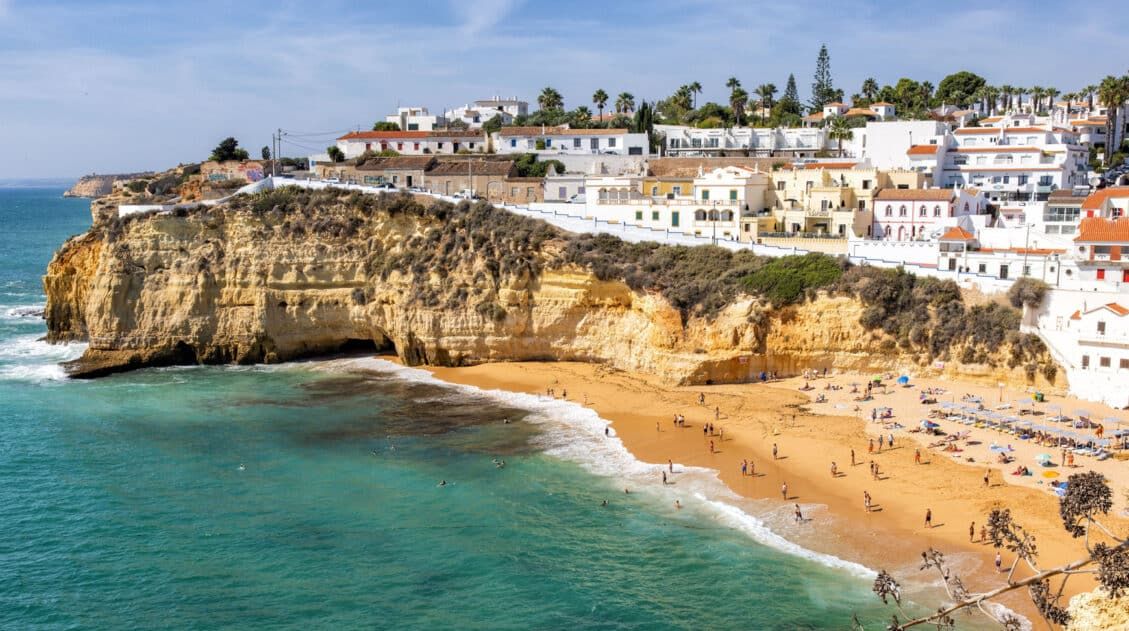
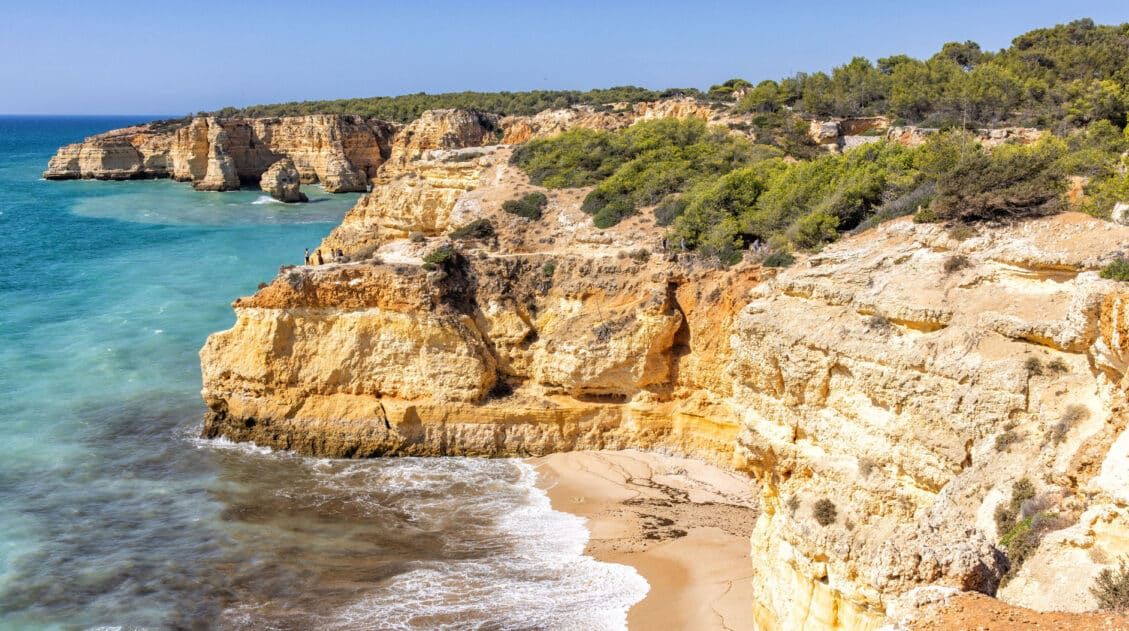
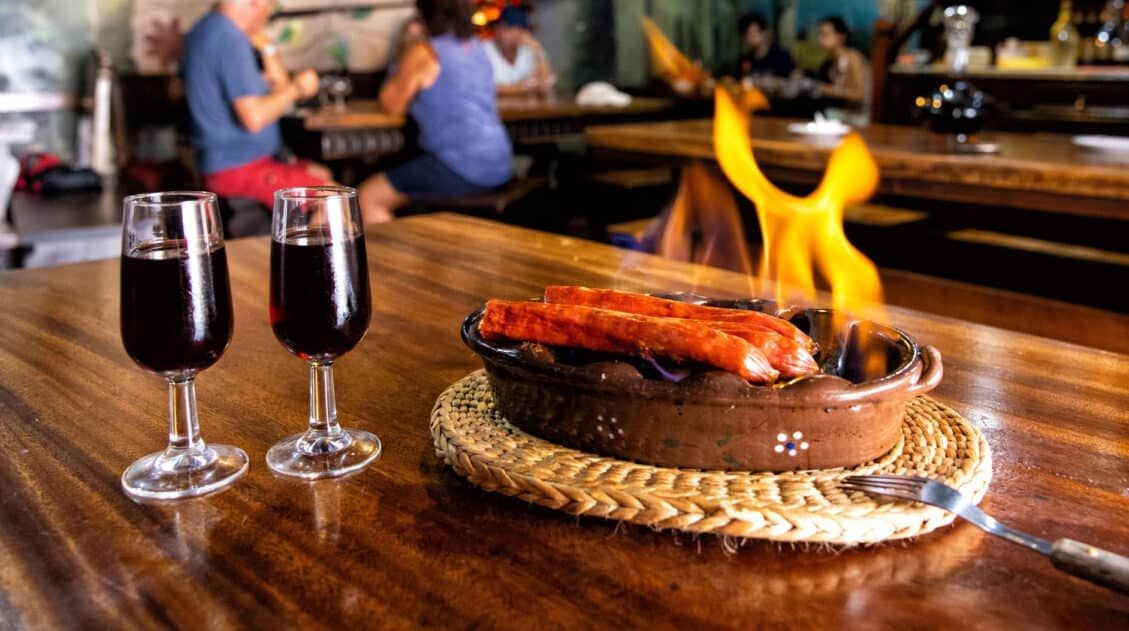
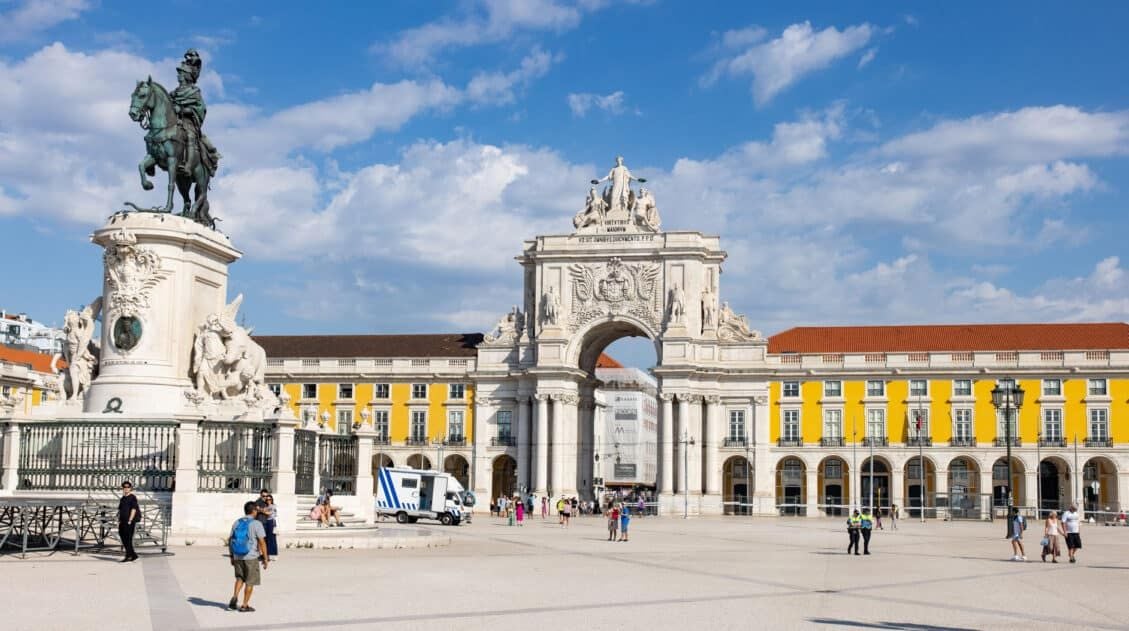
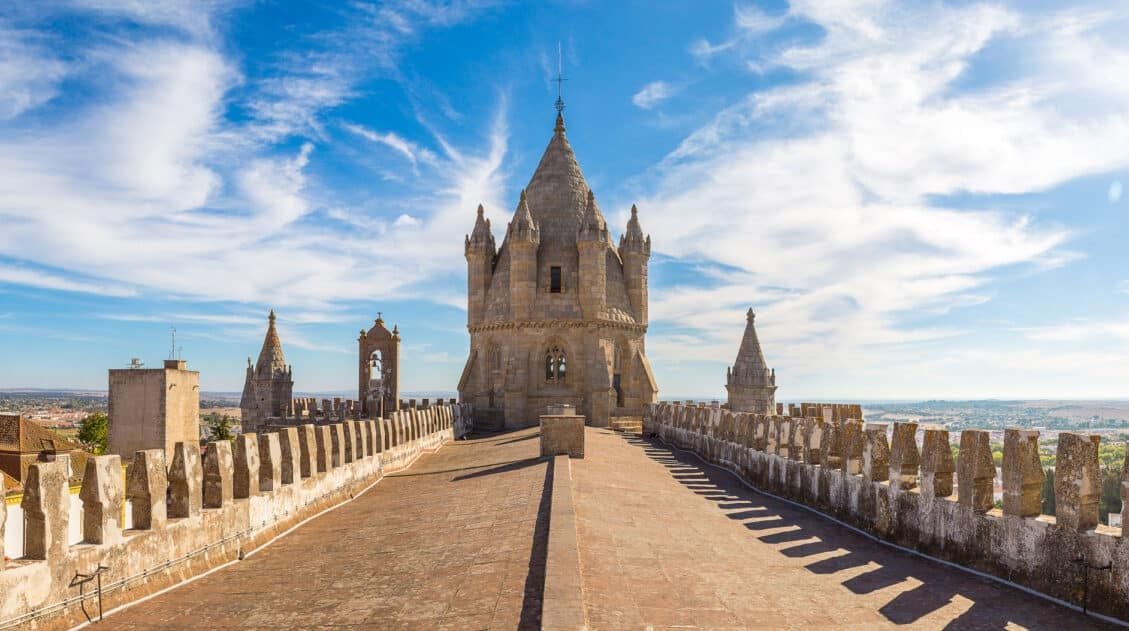
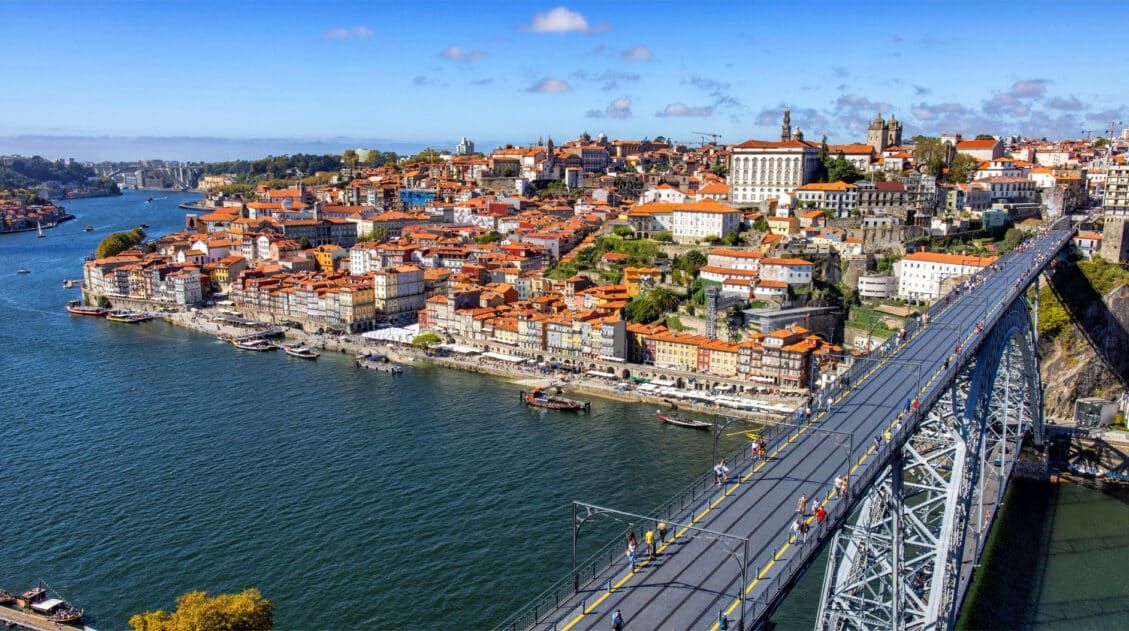
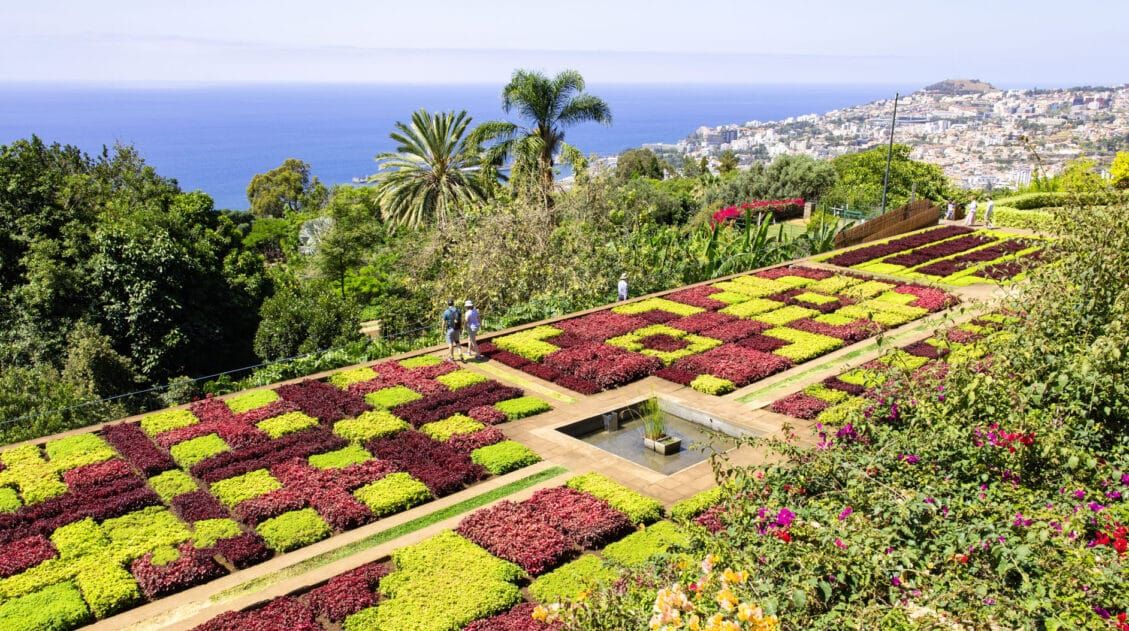
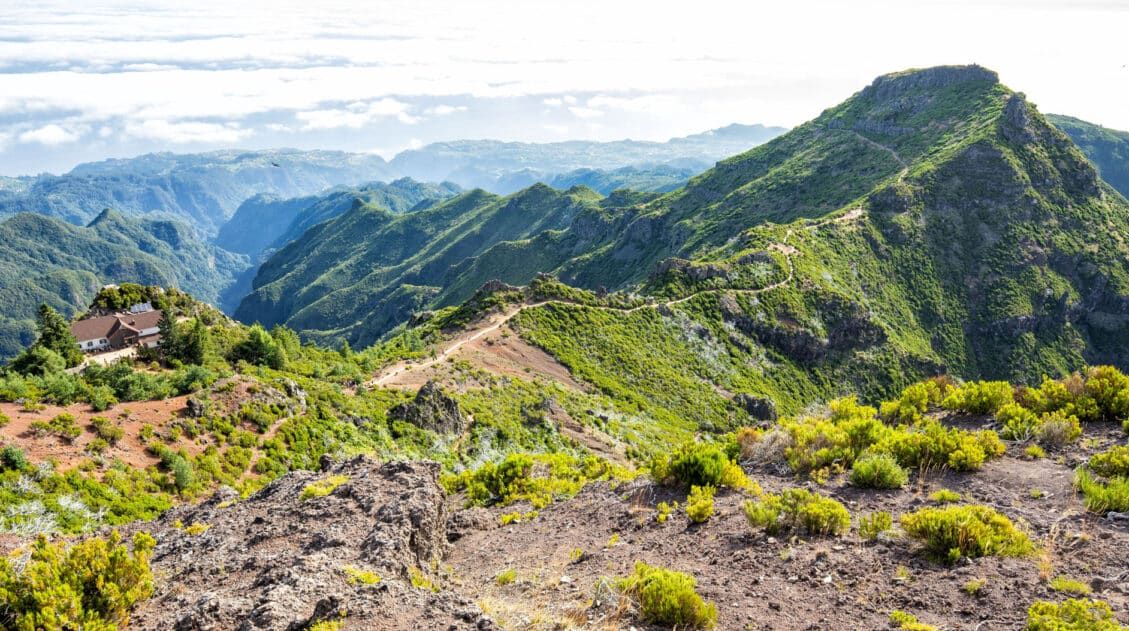
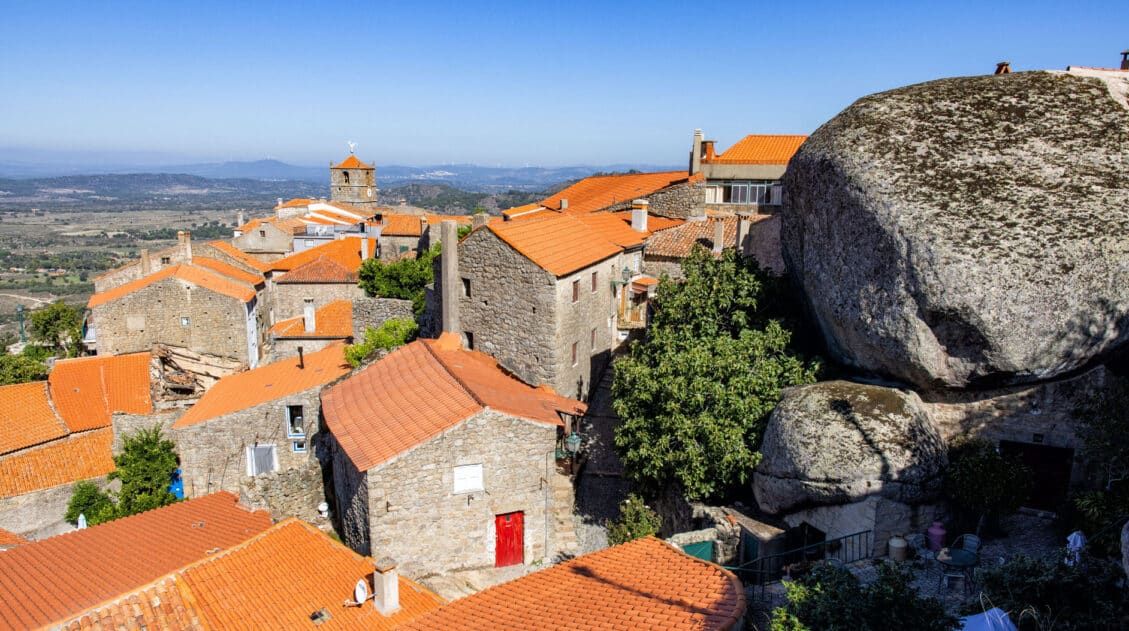
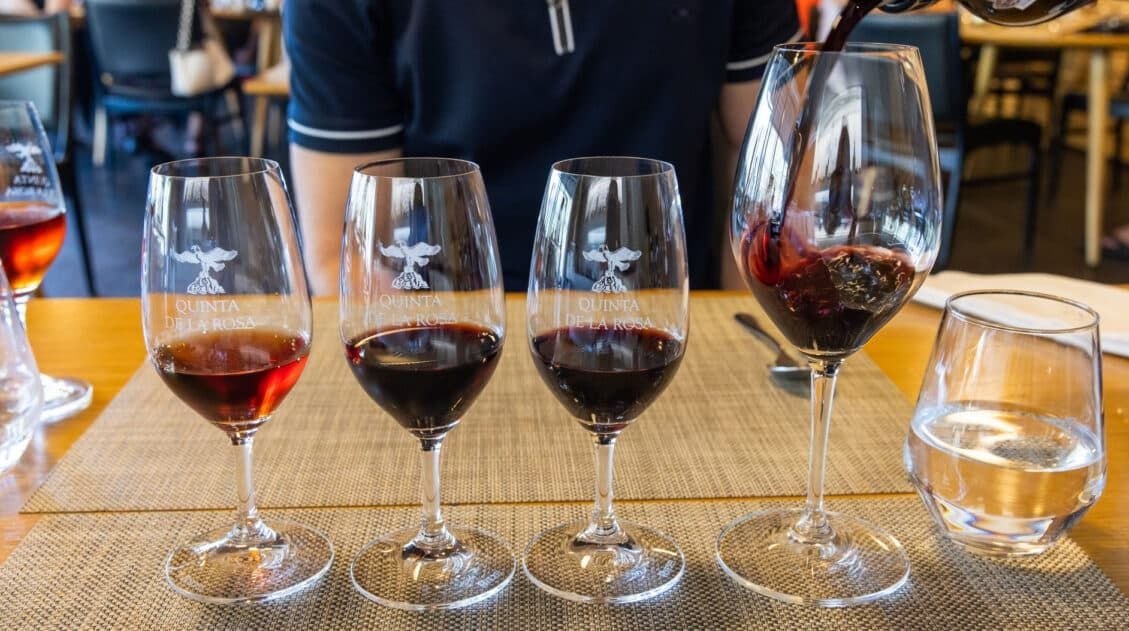
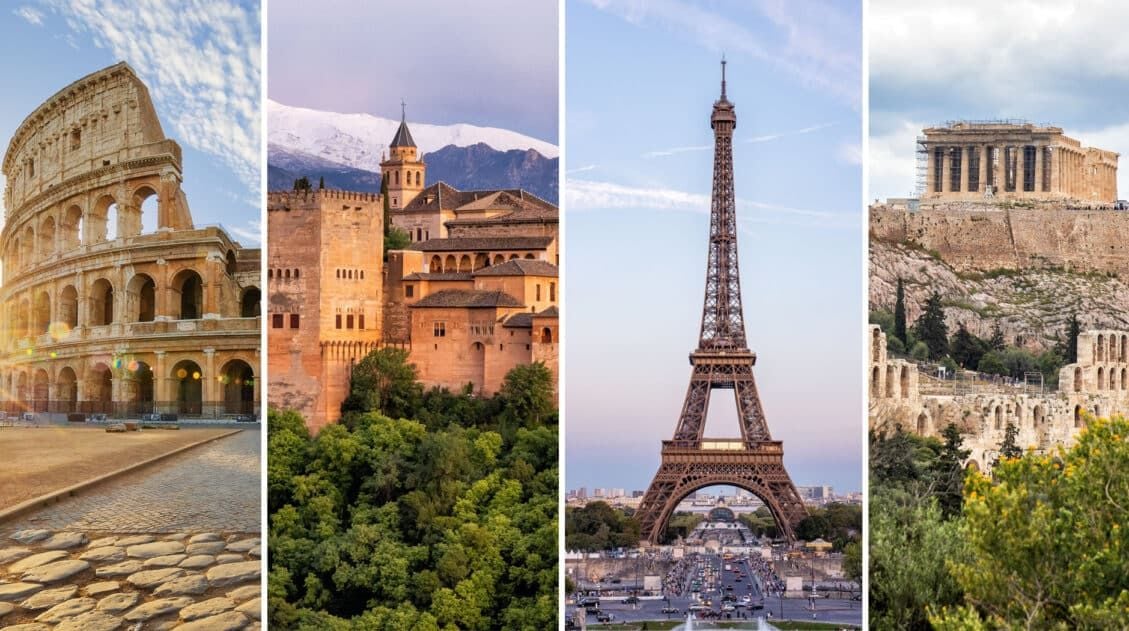
Leave a Comment